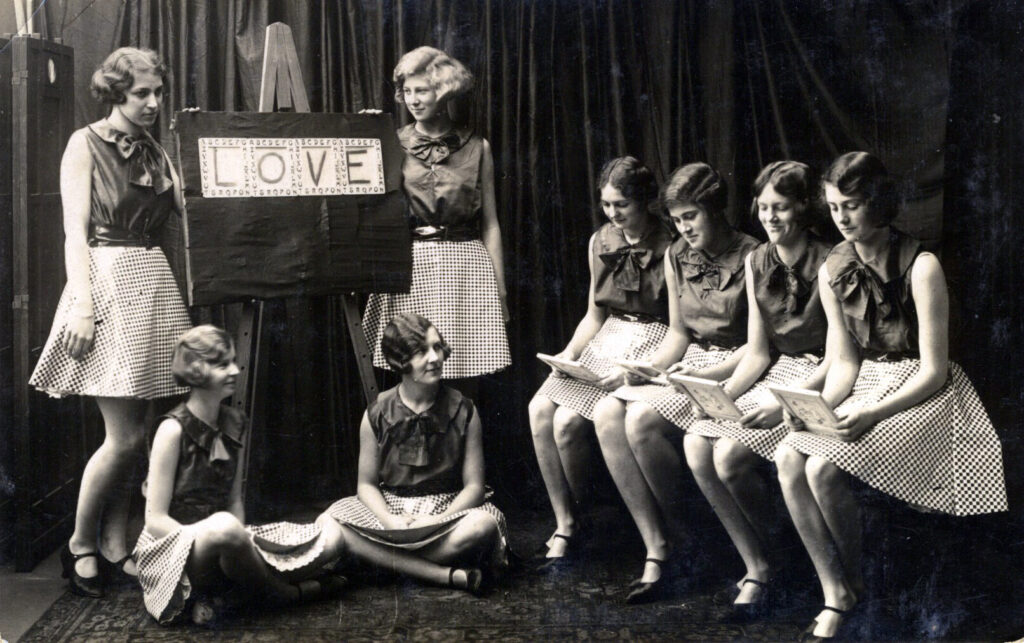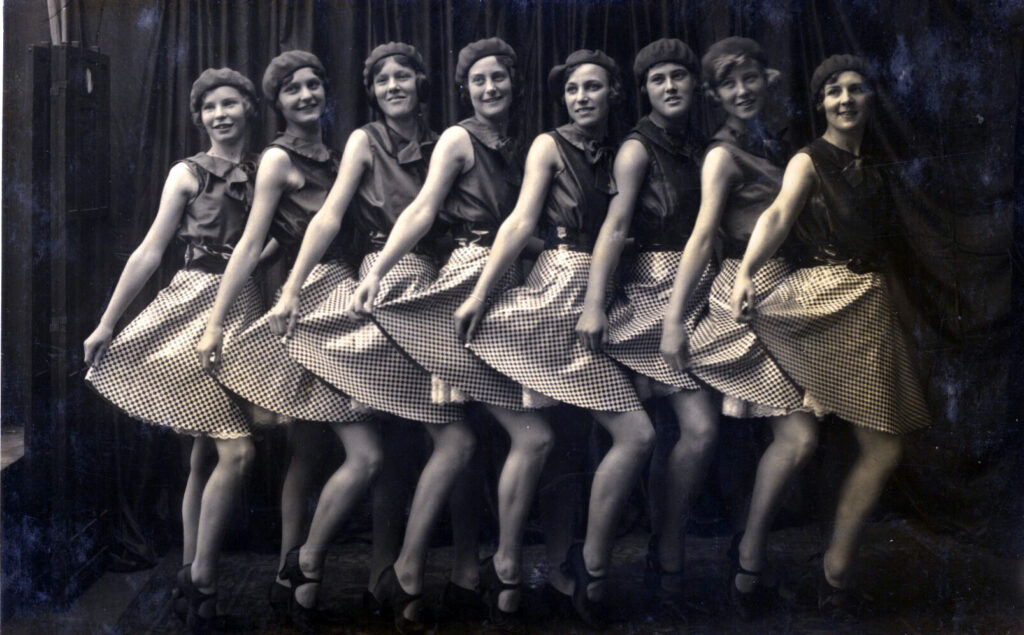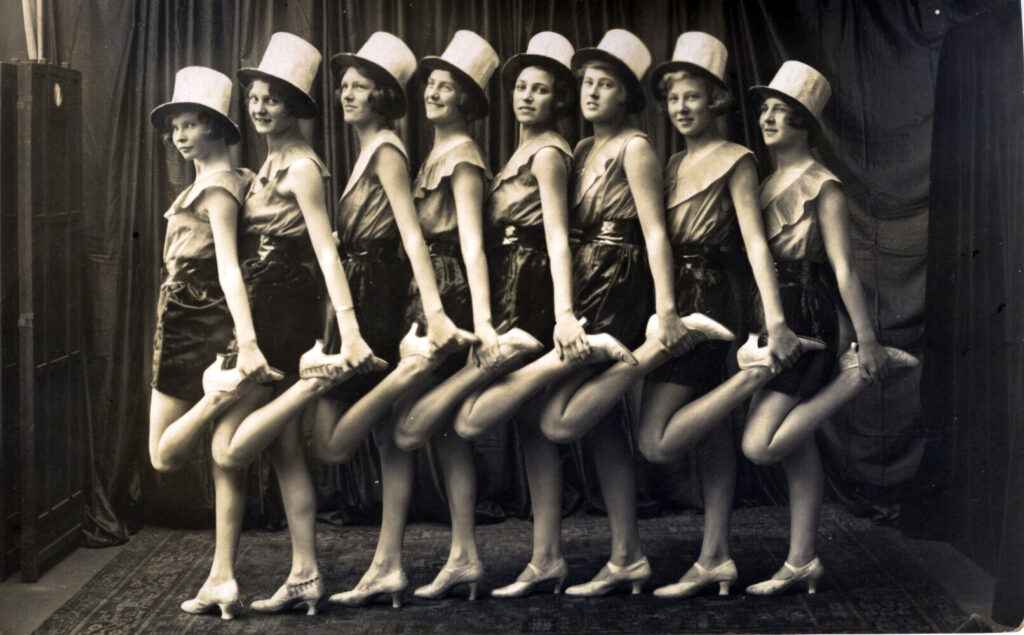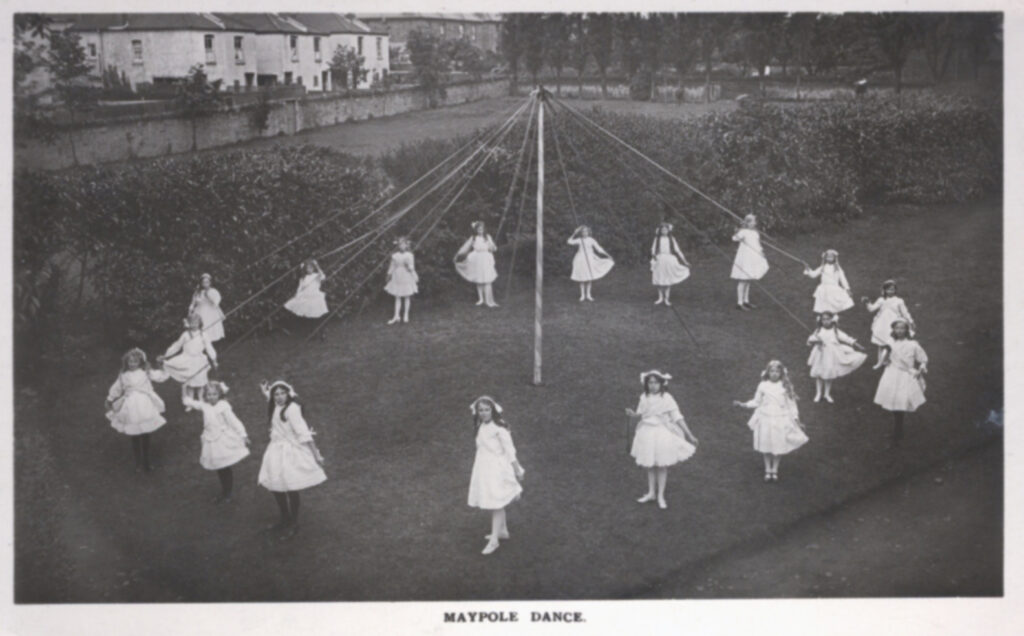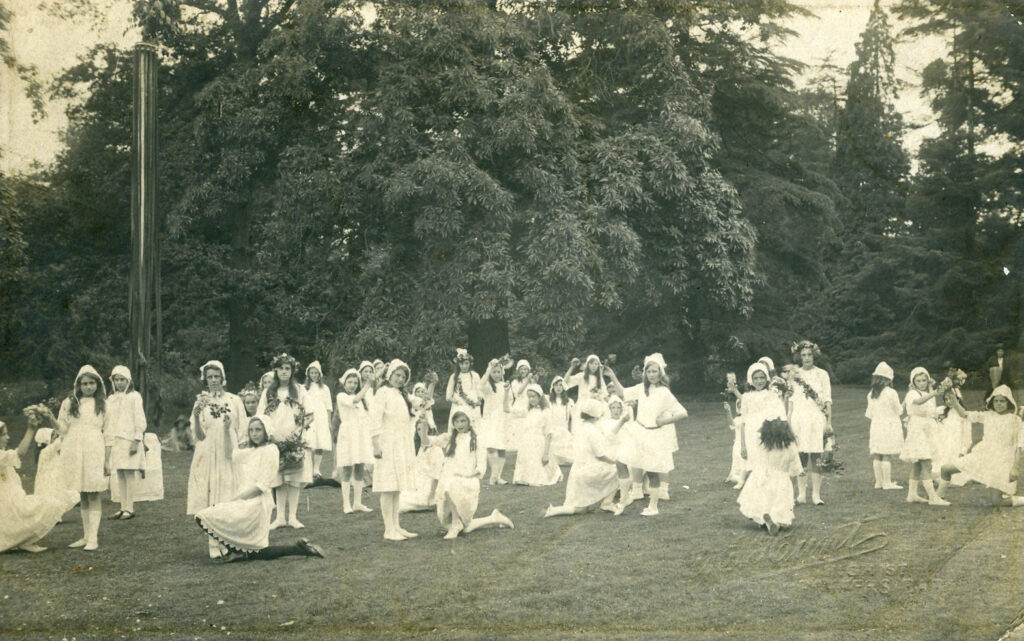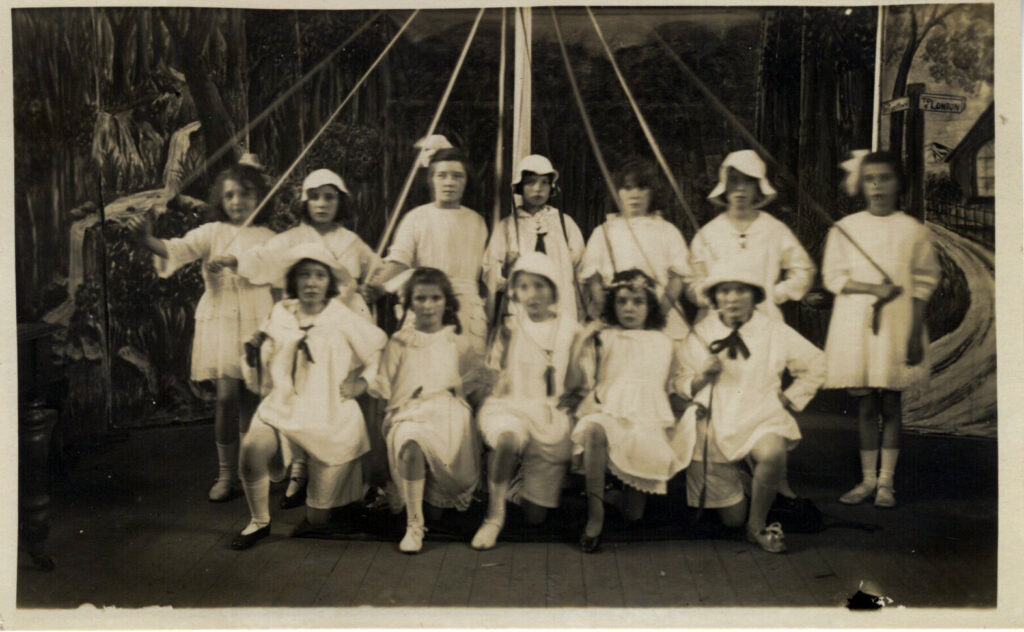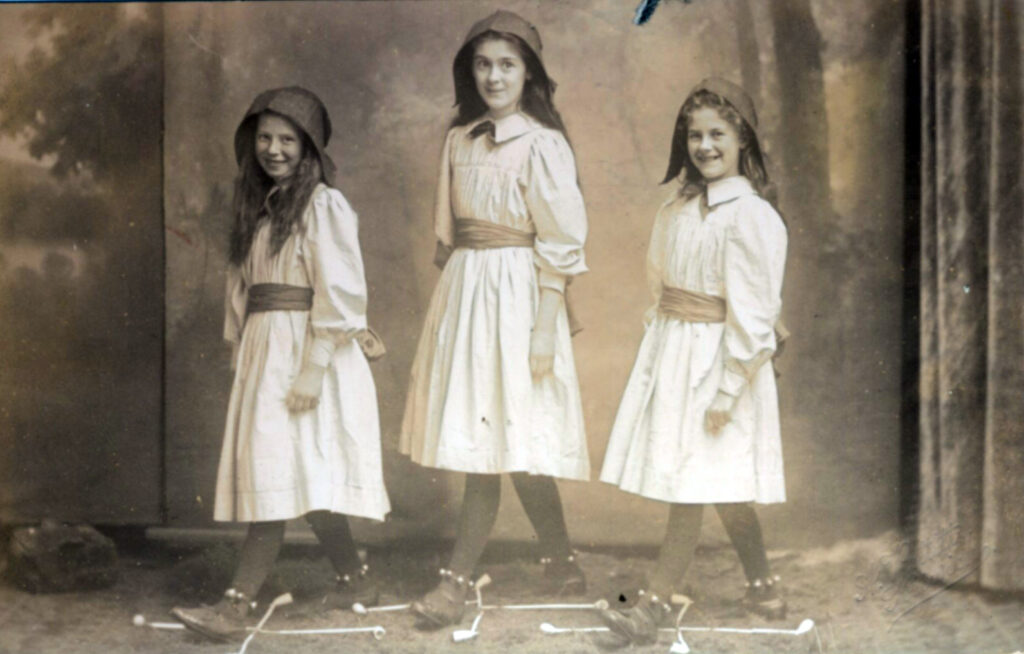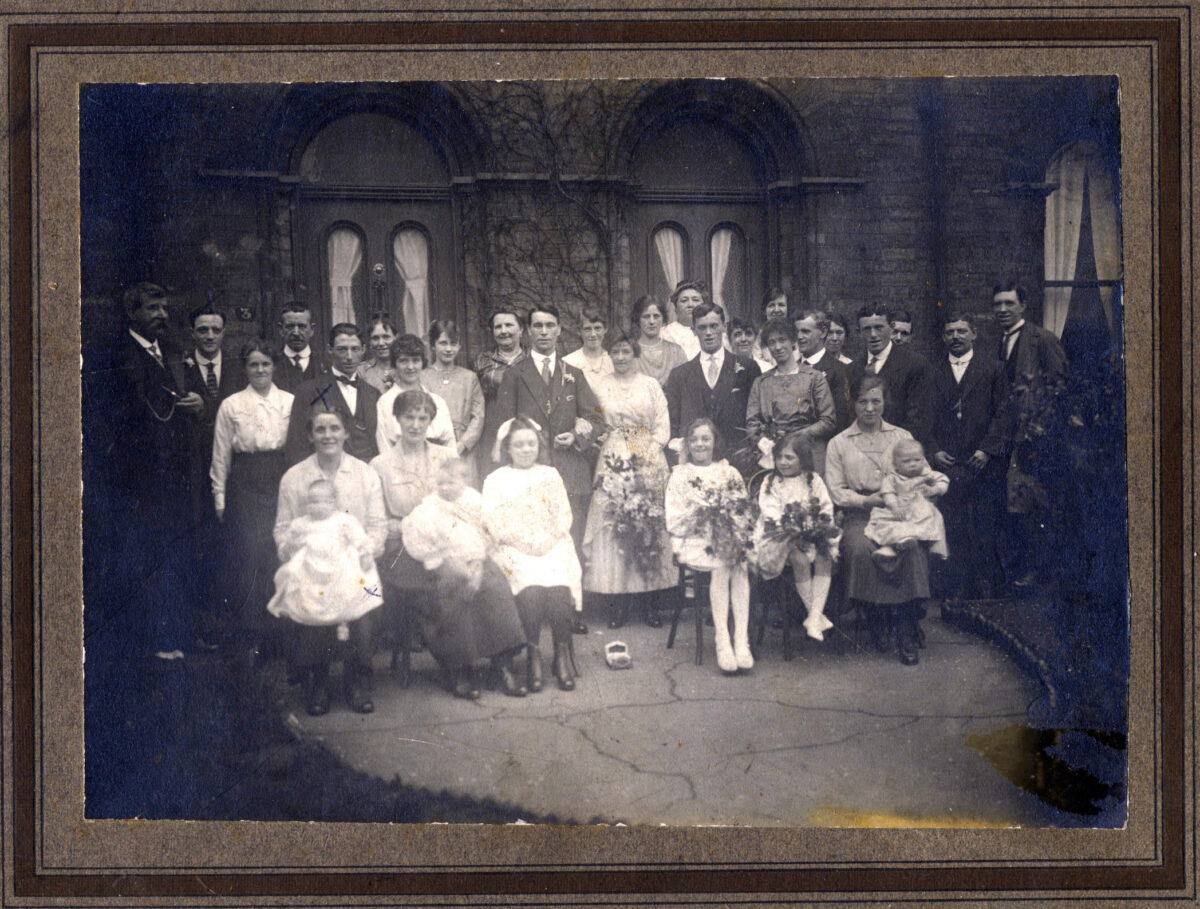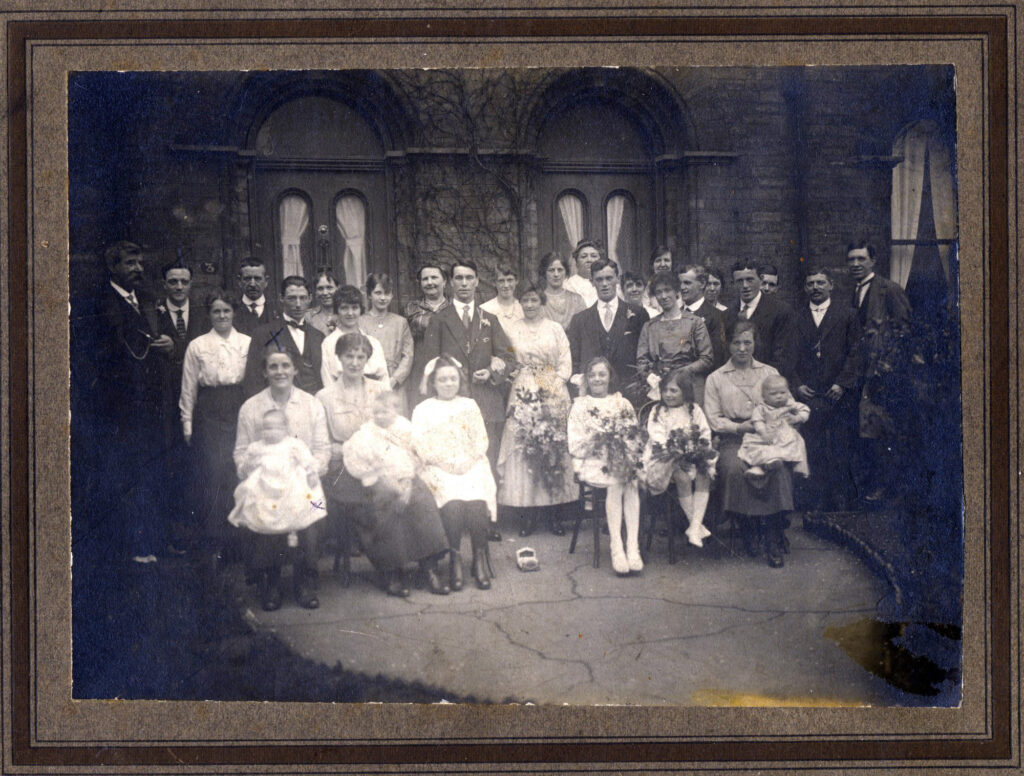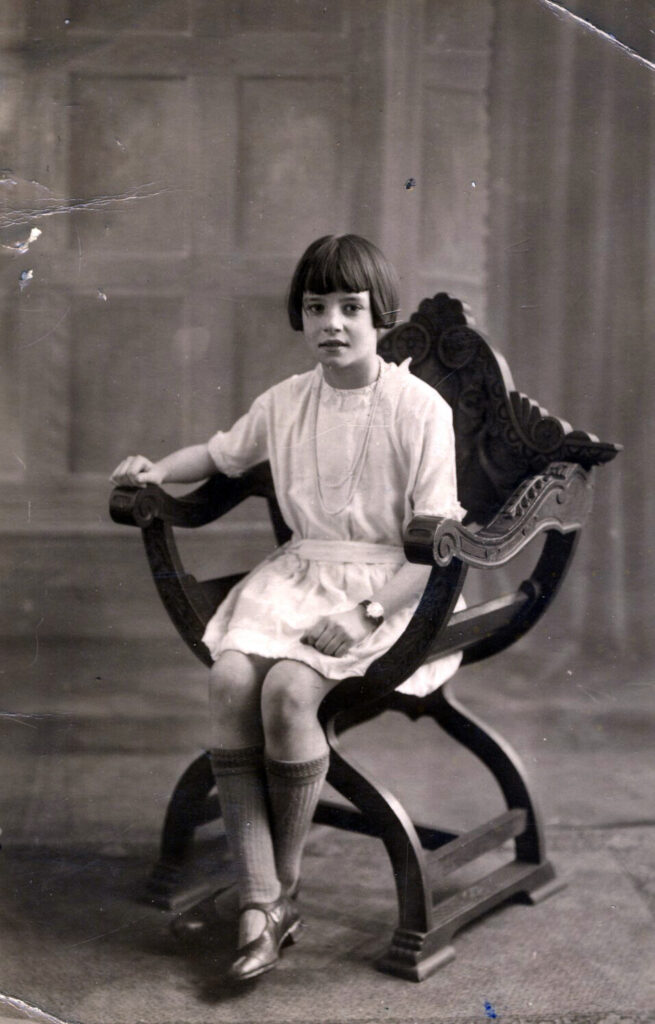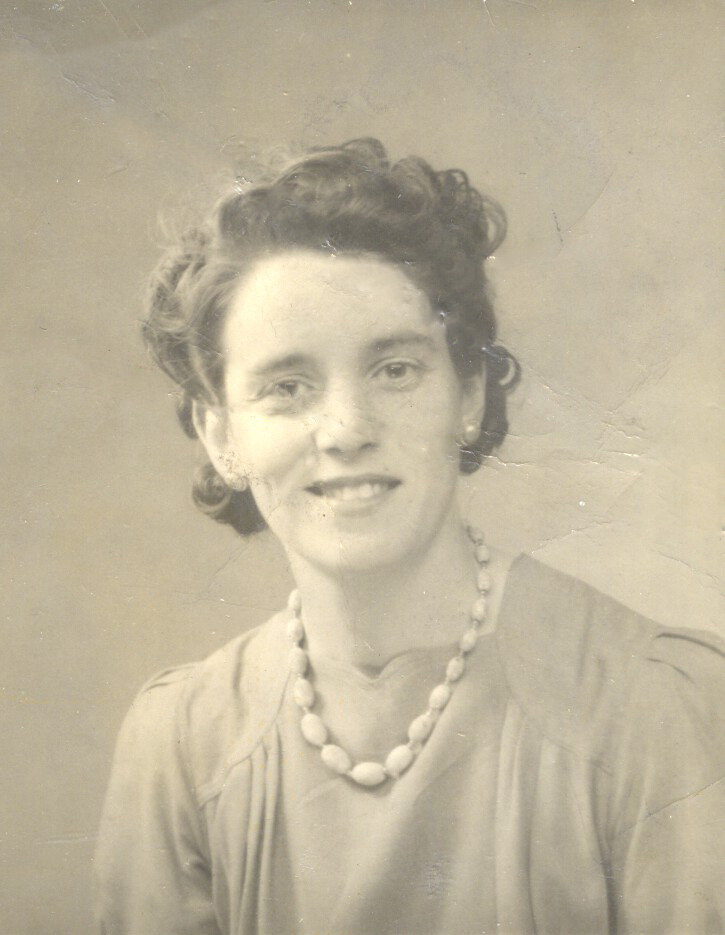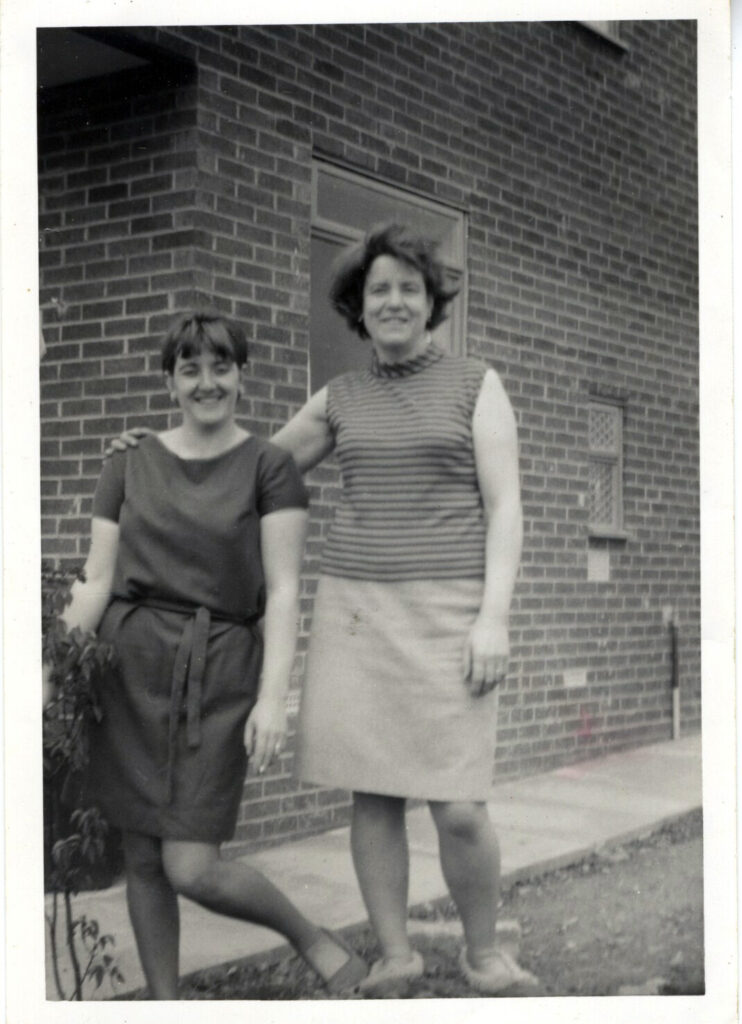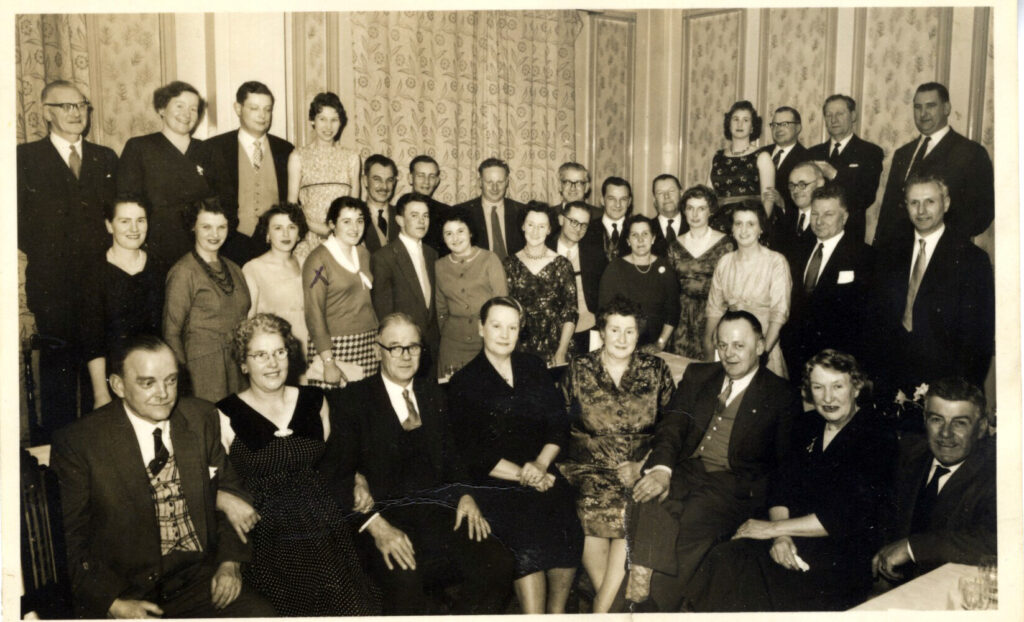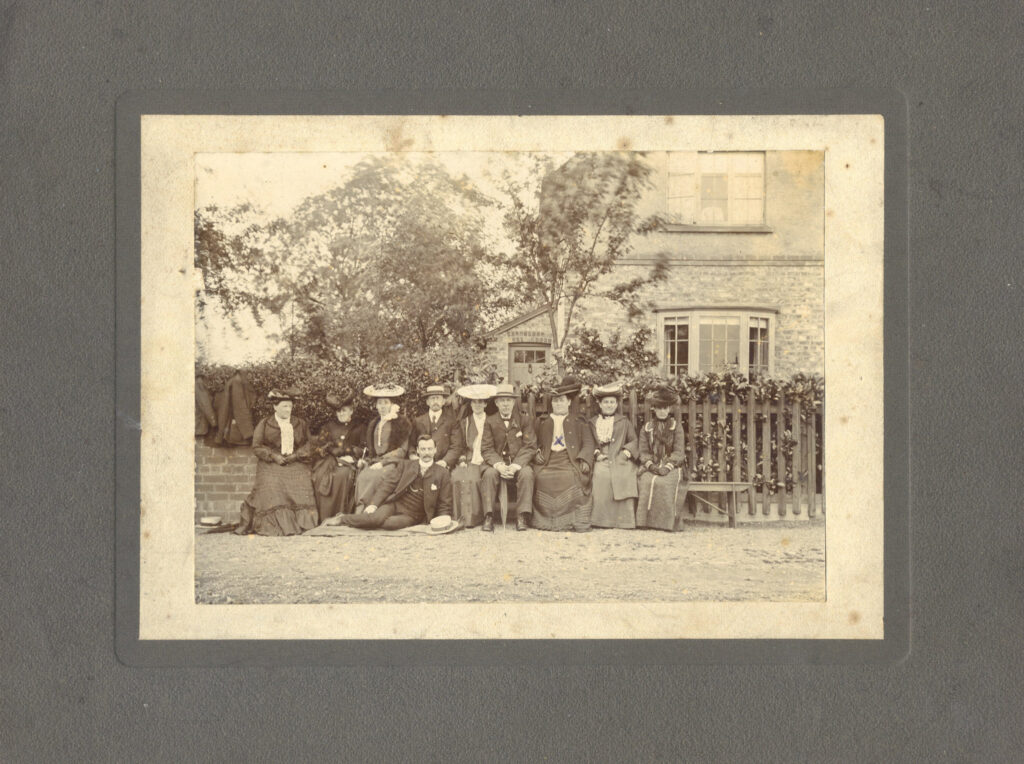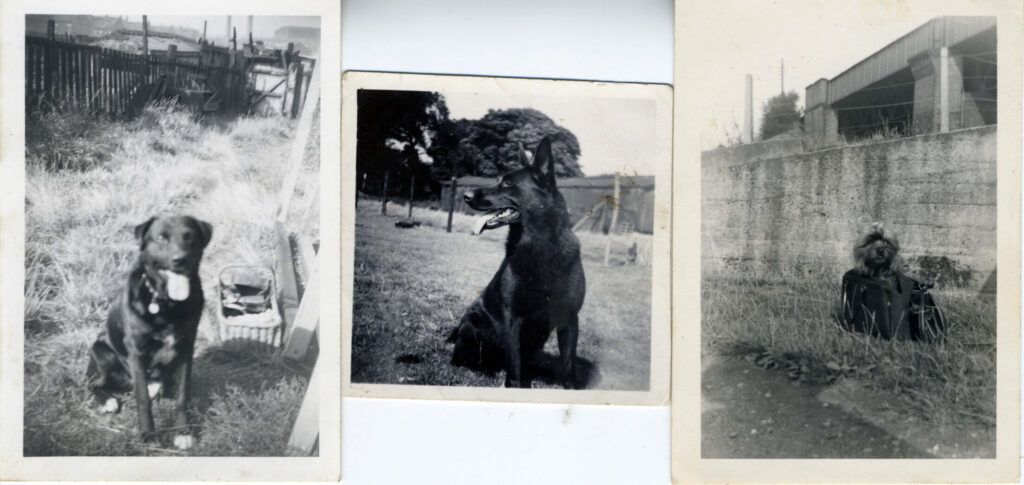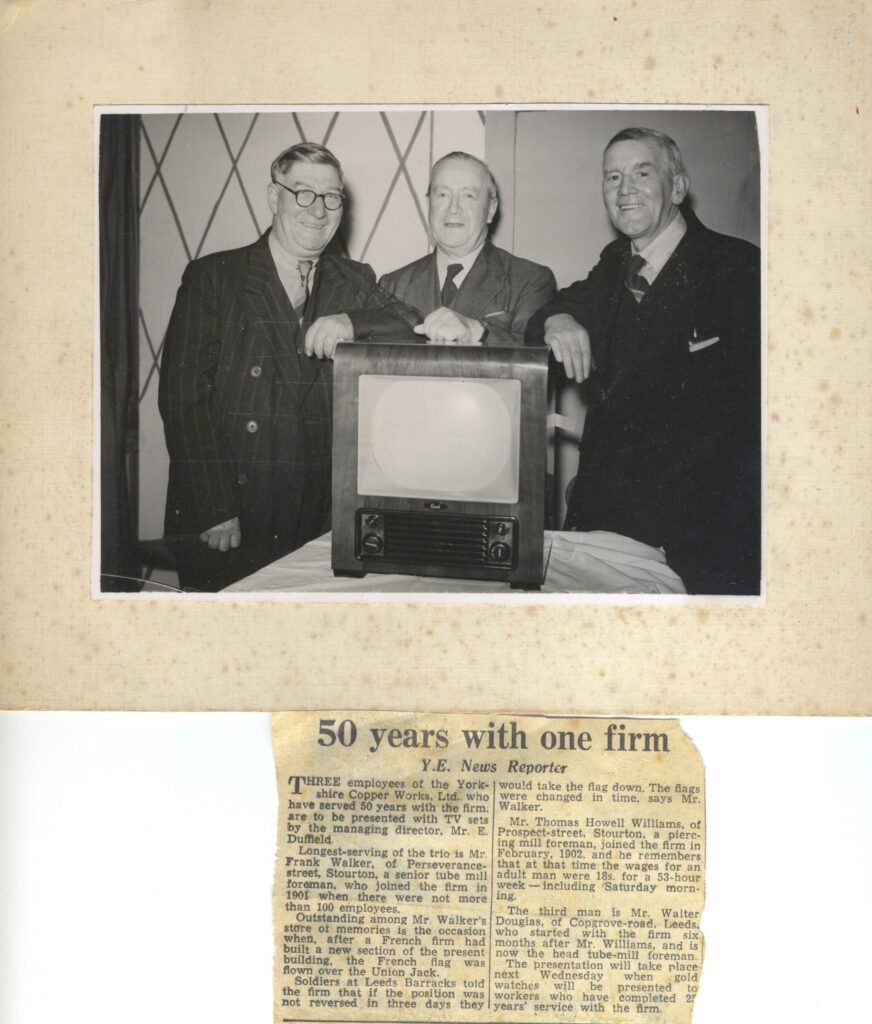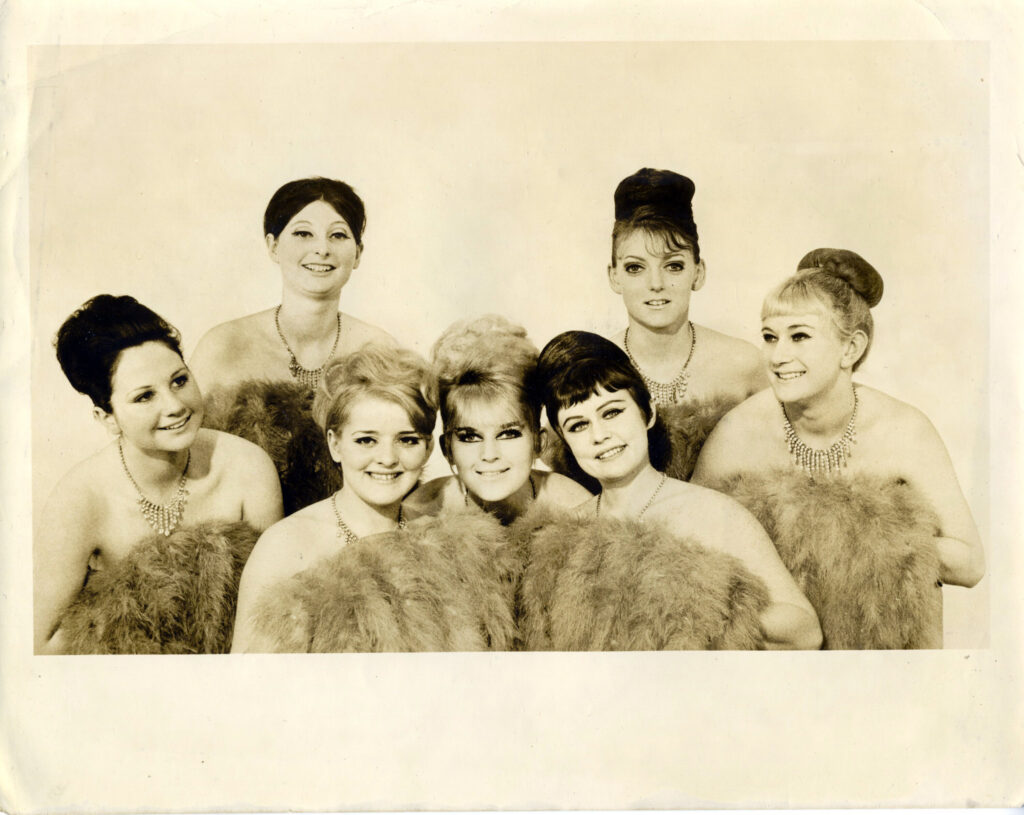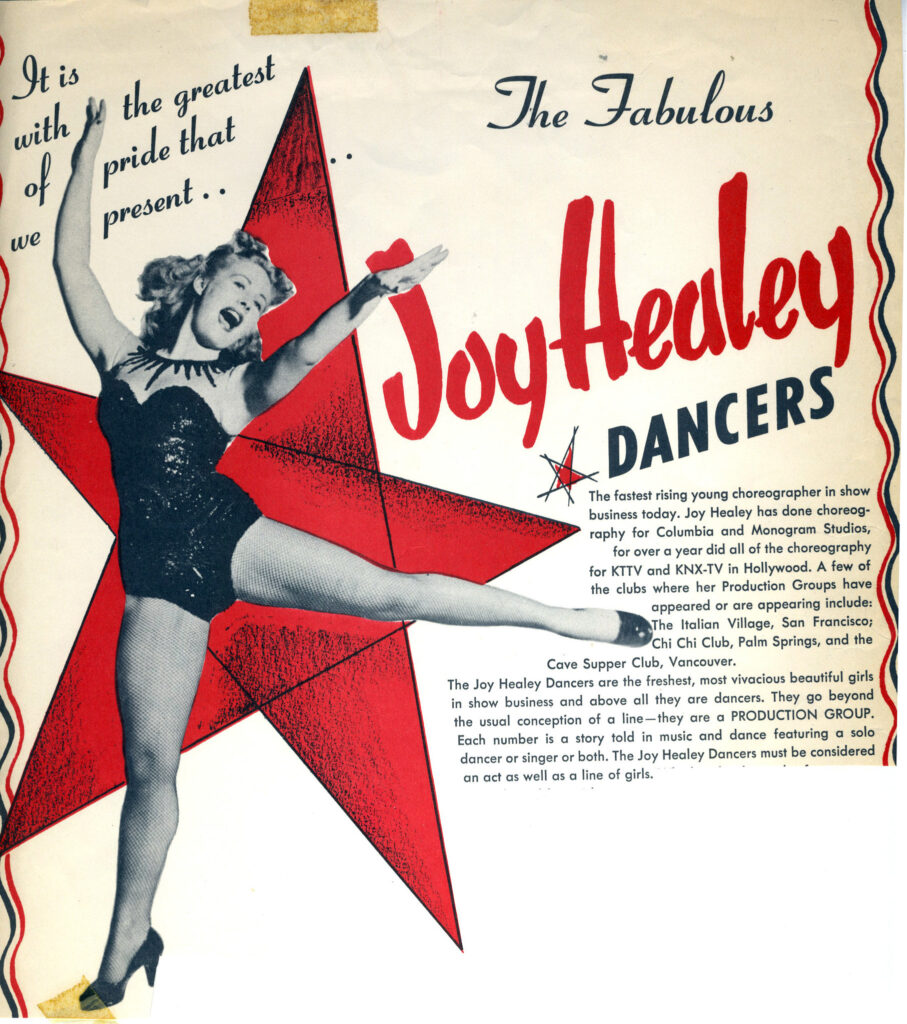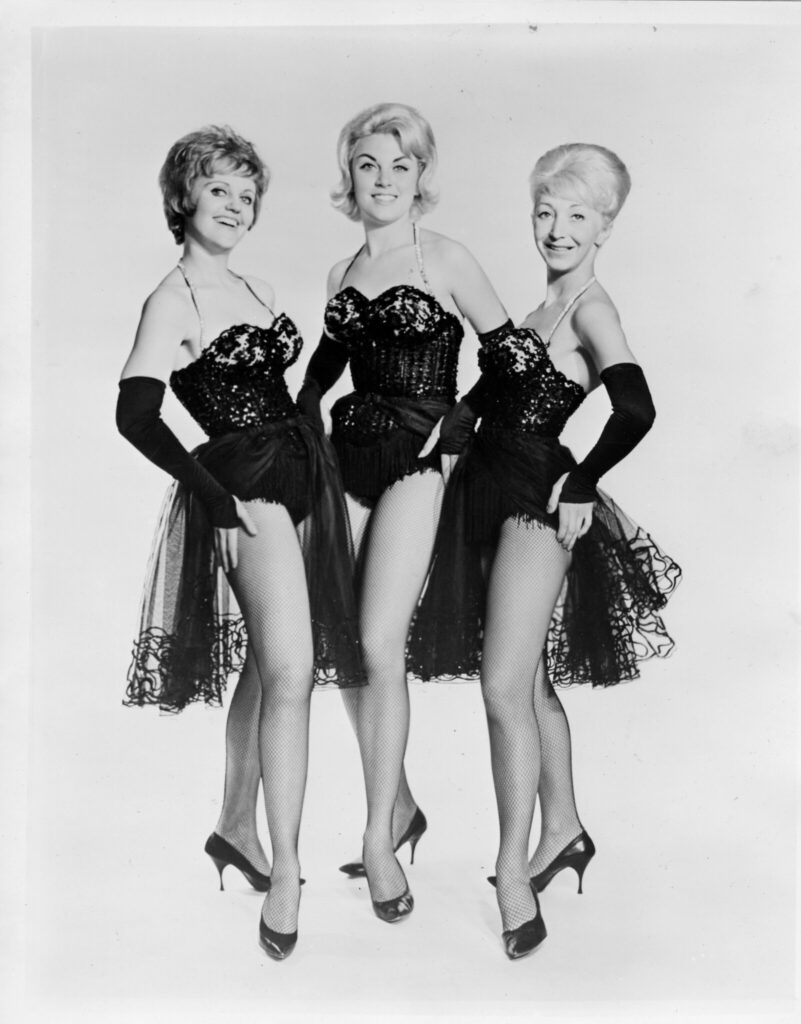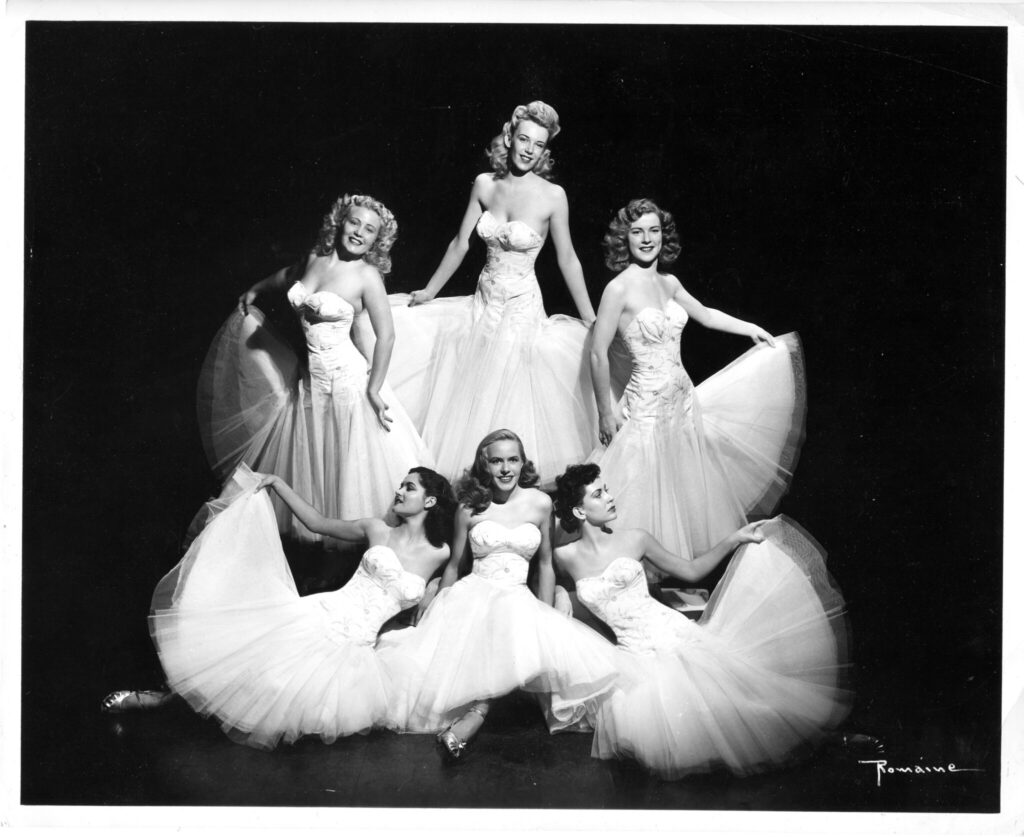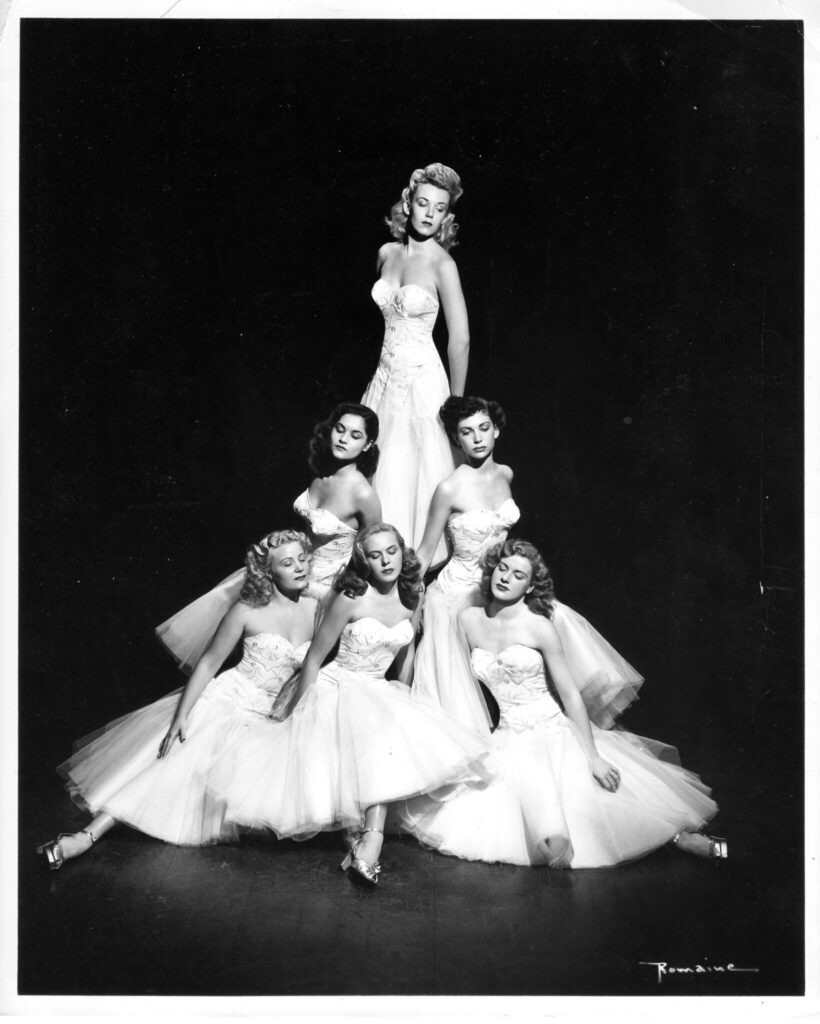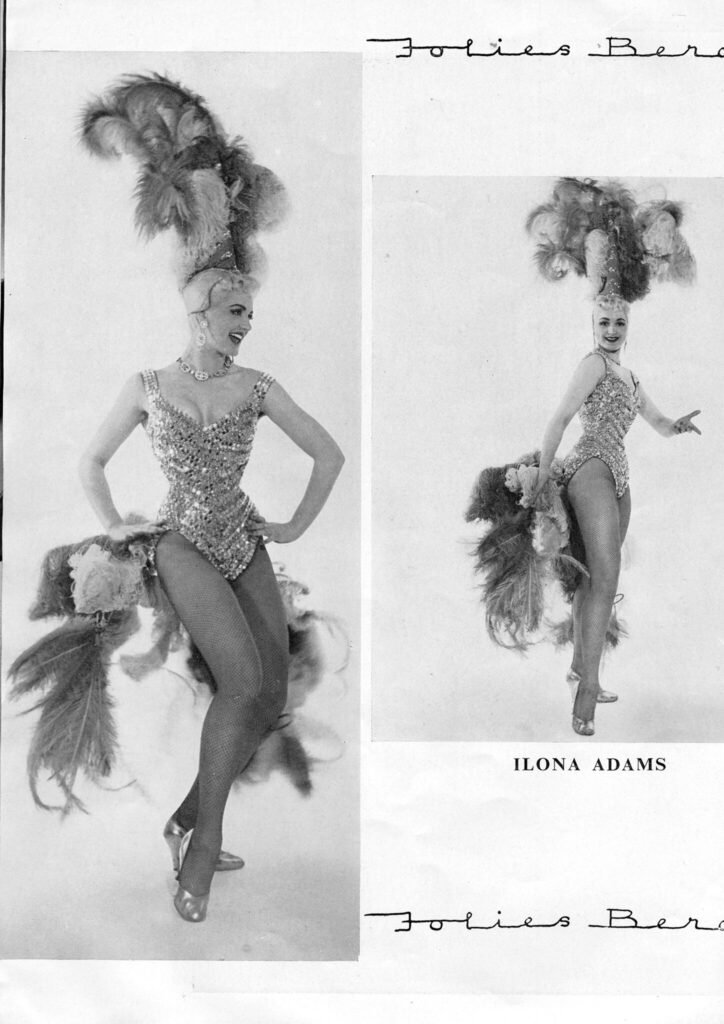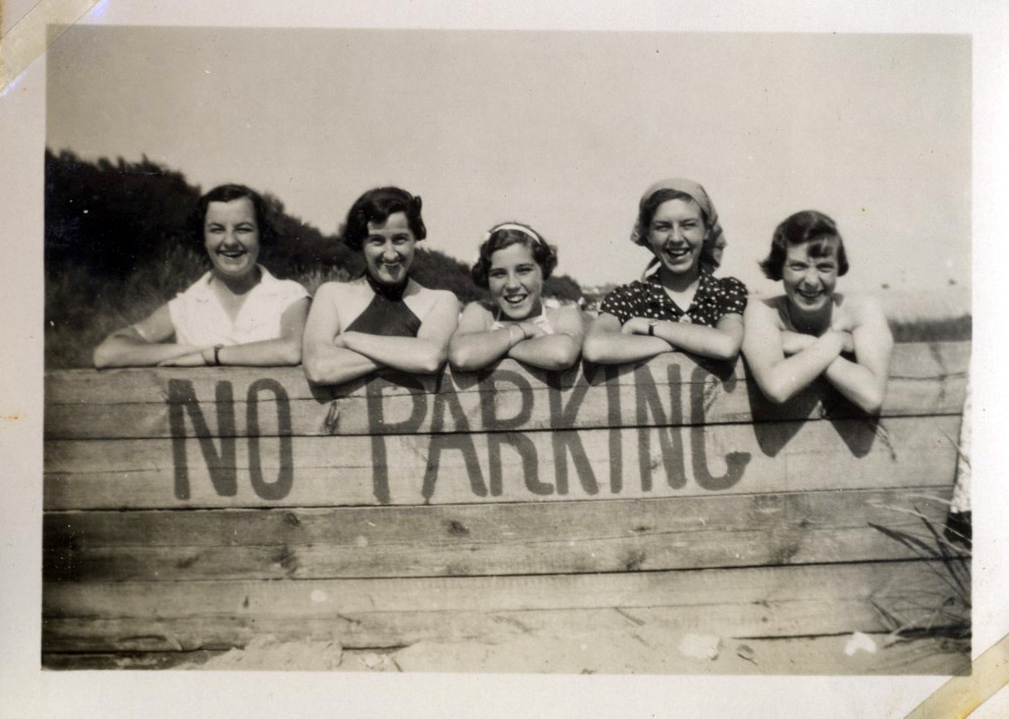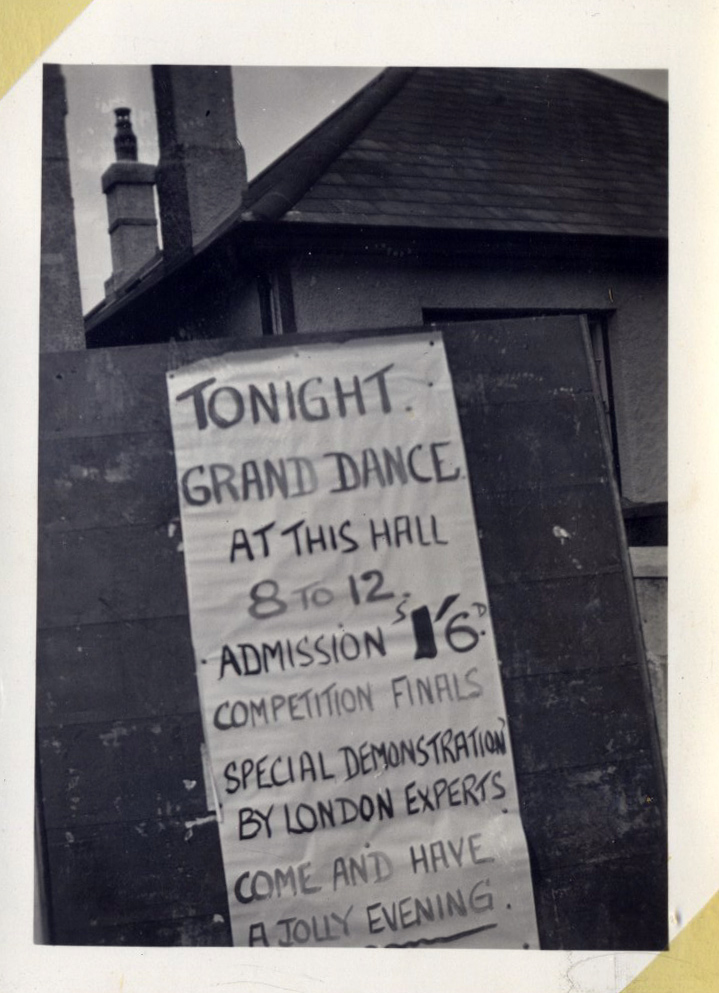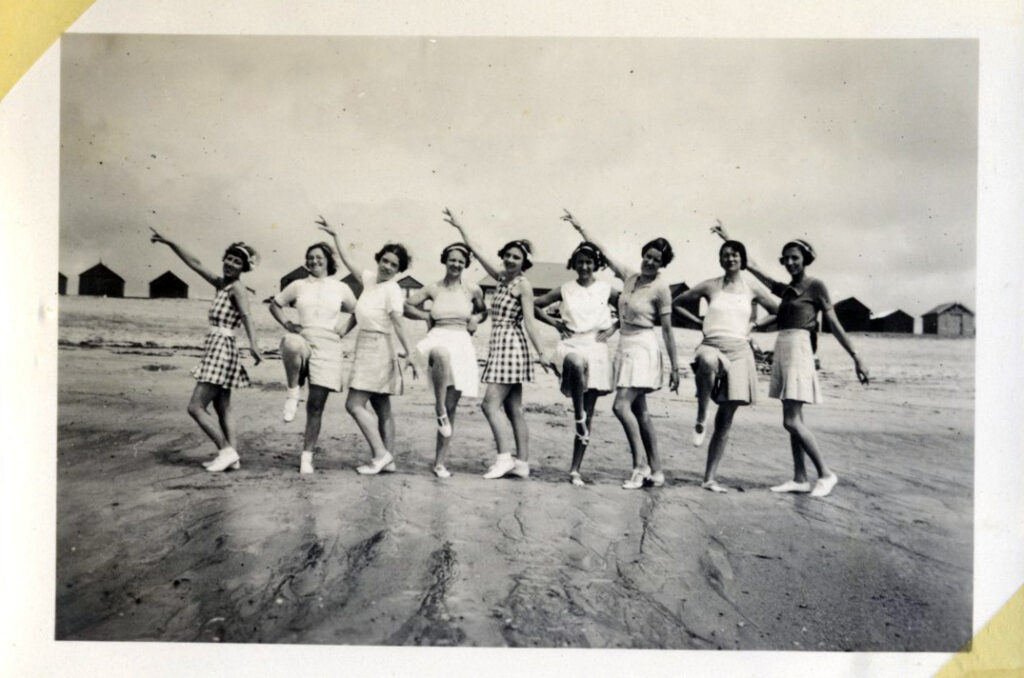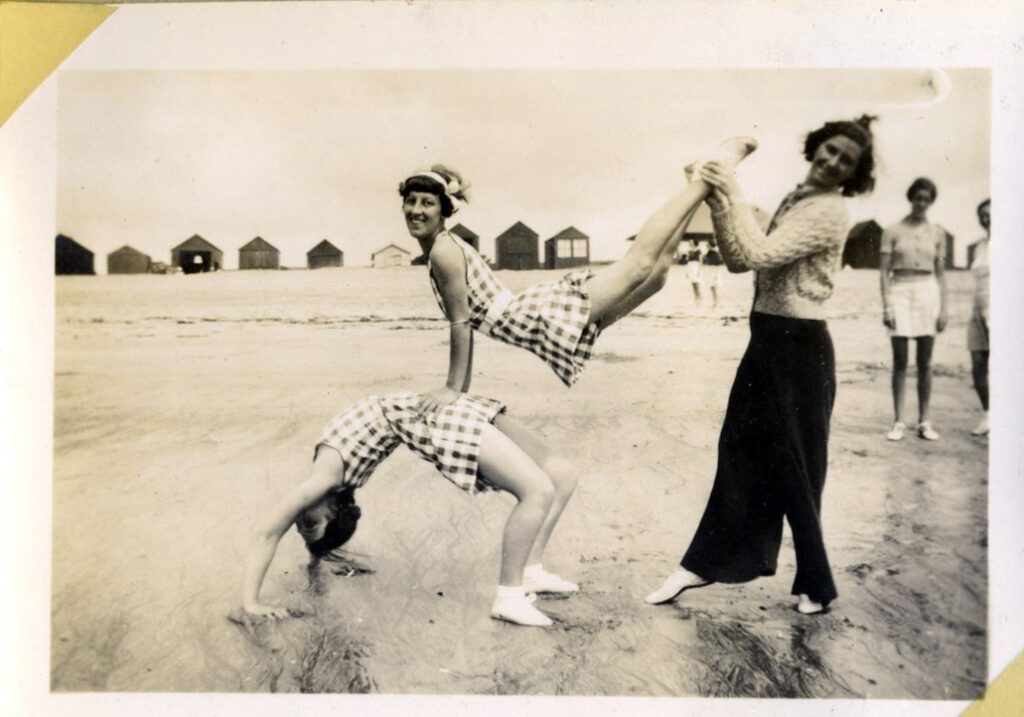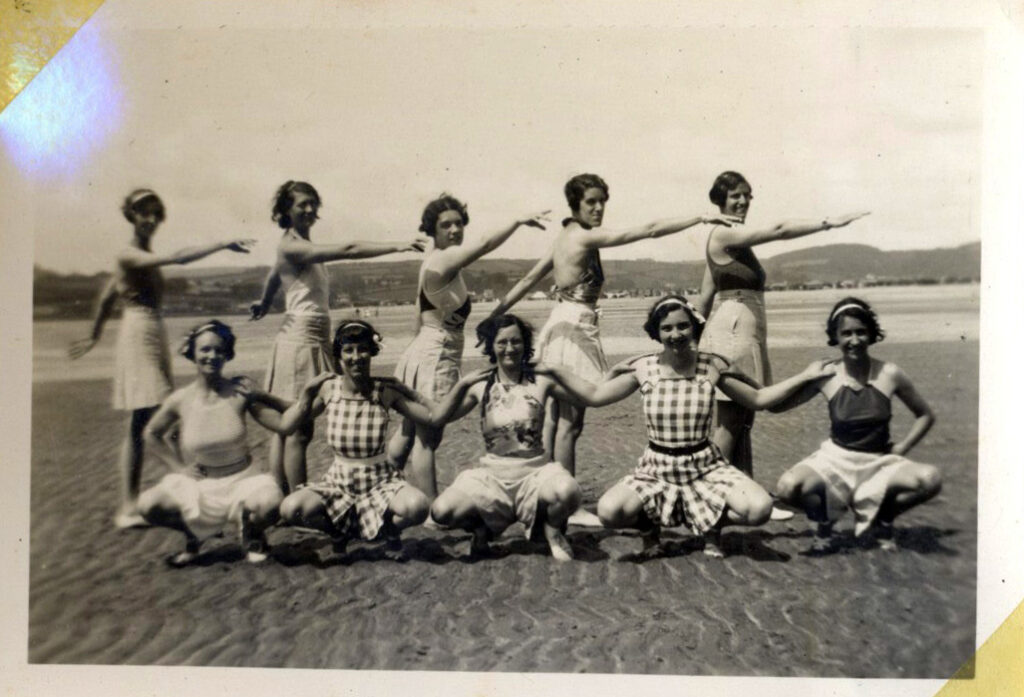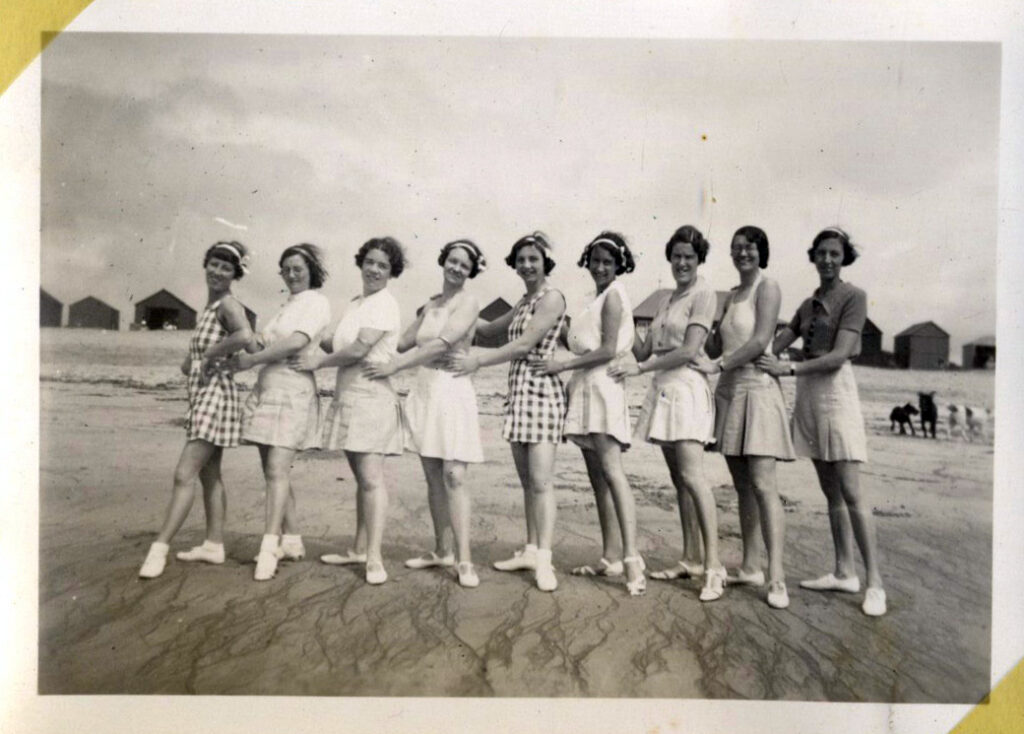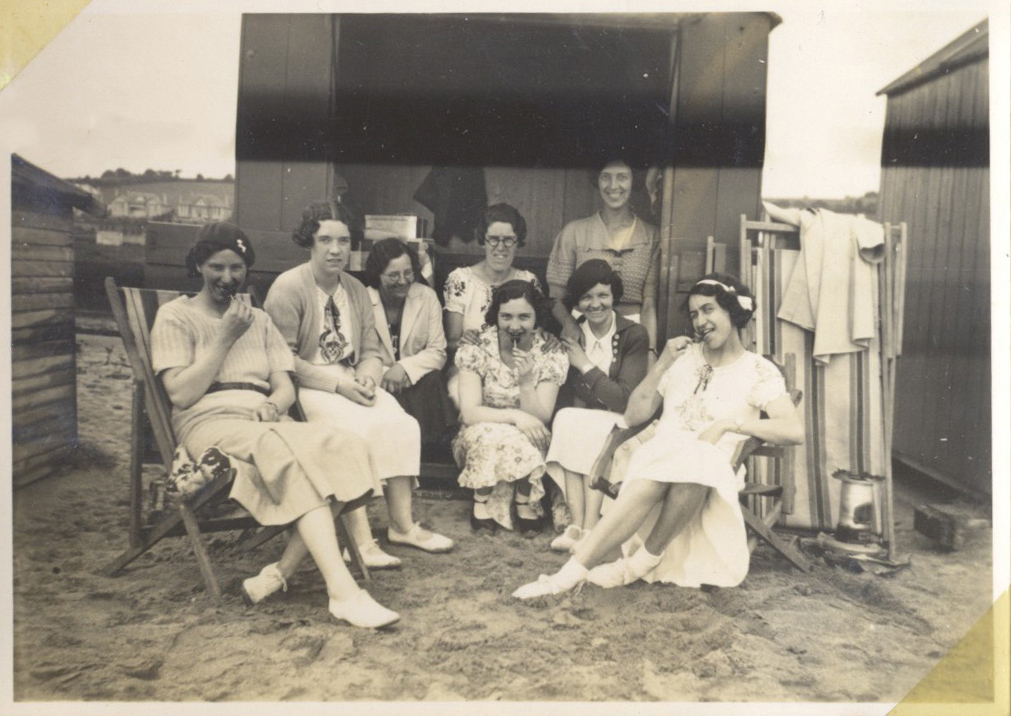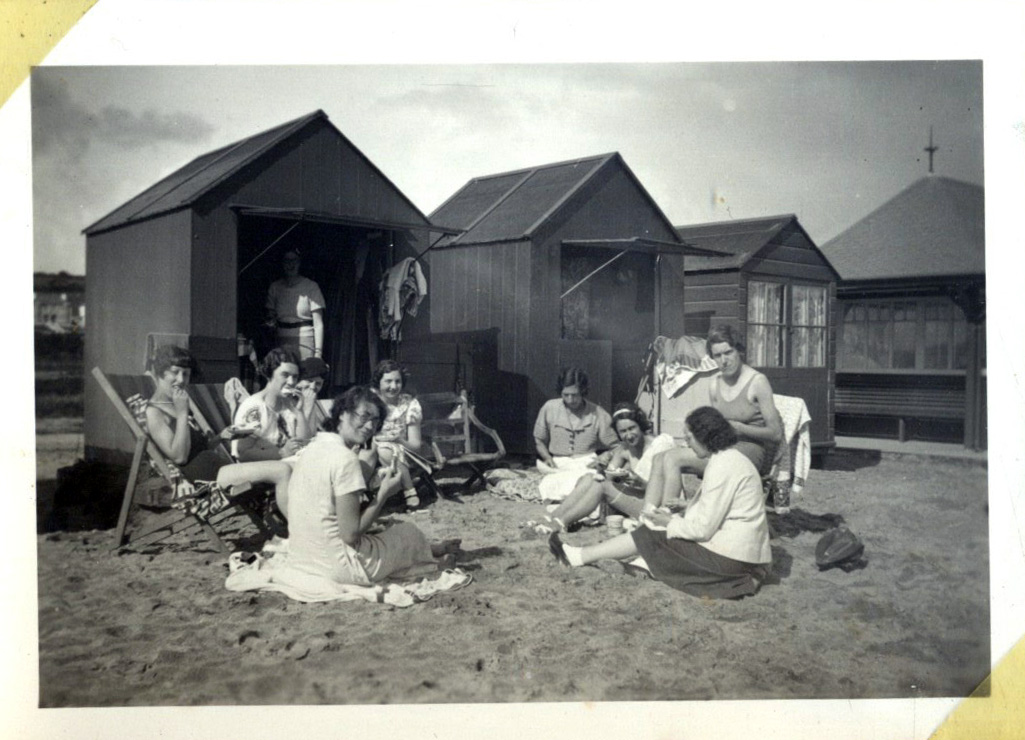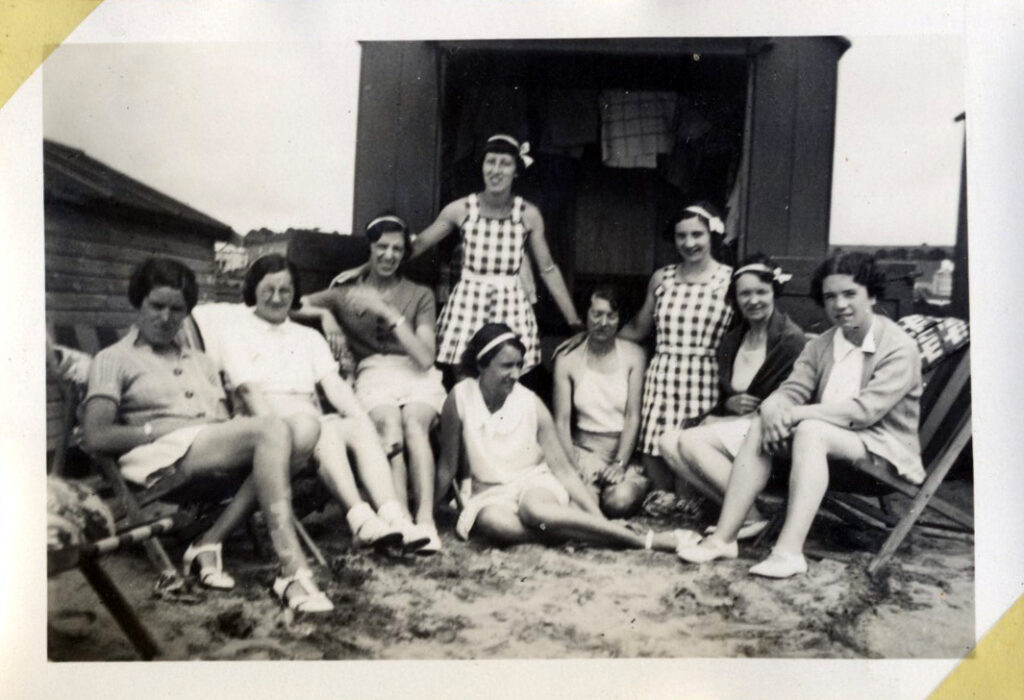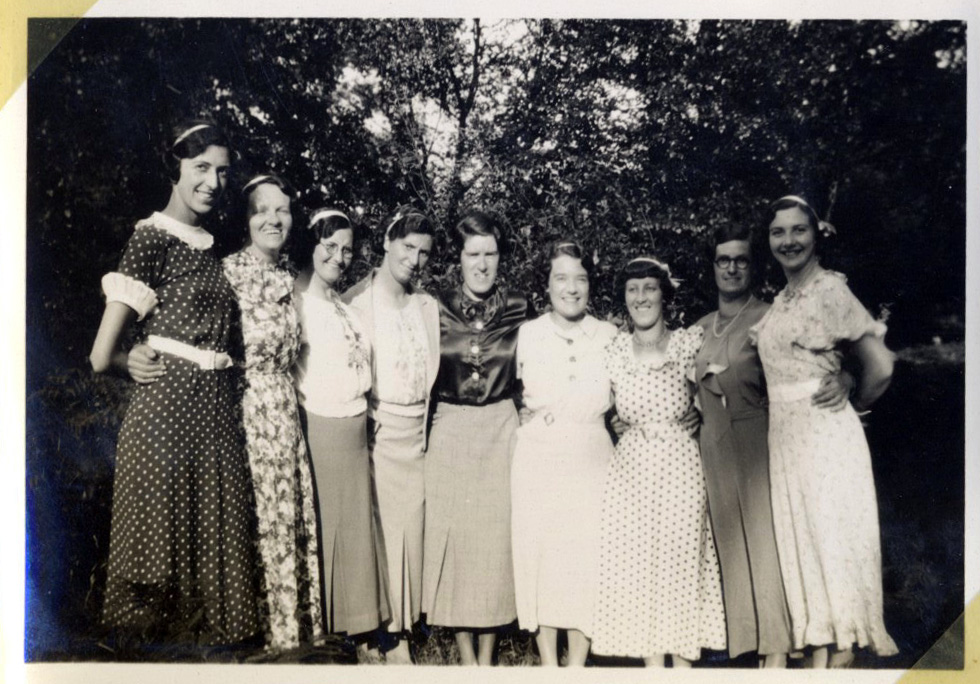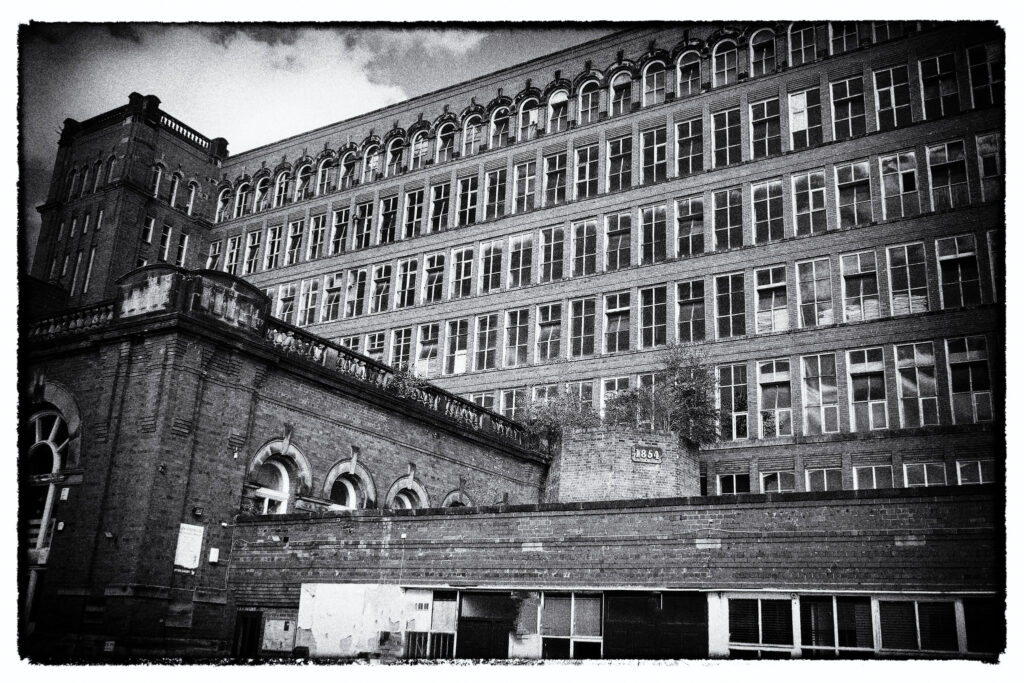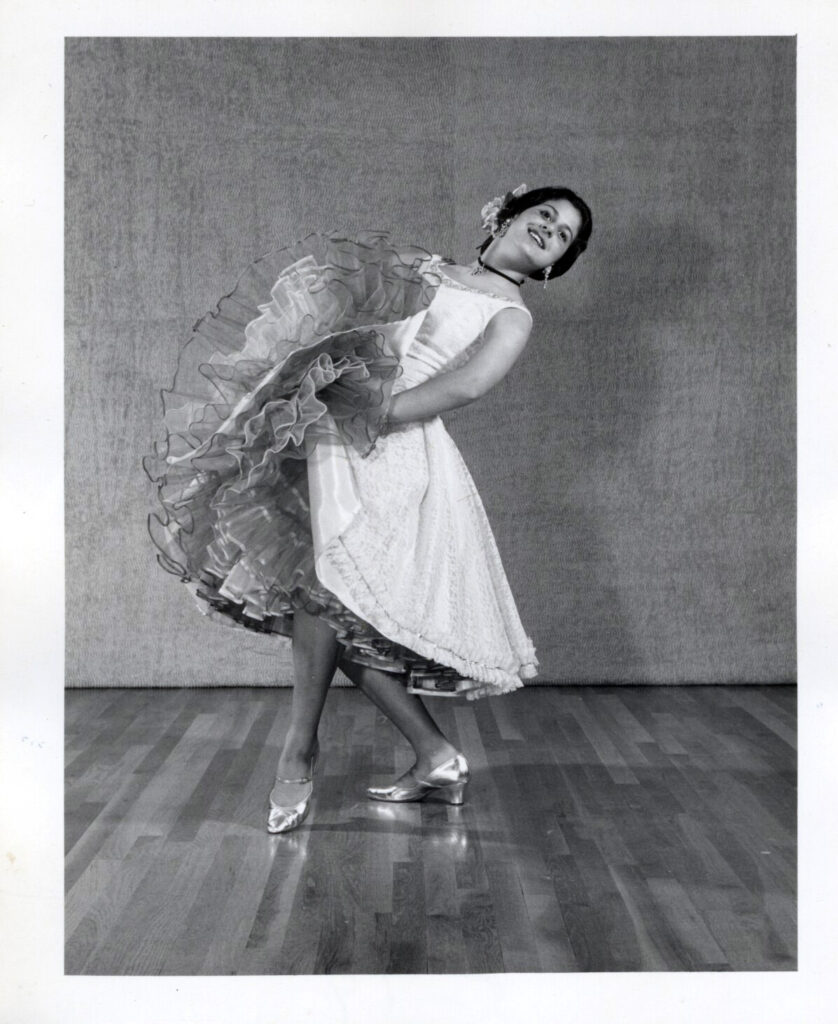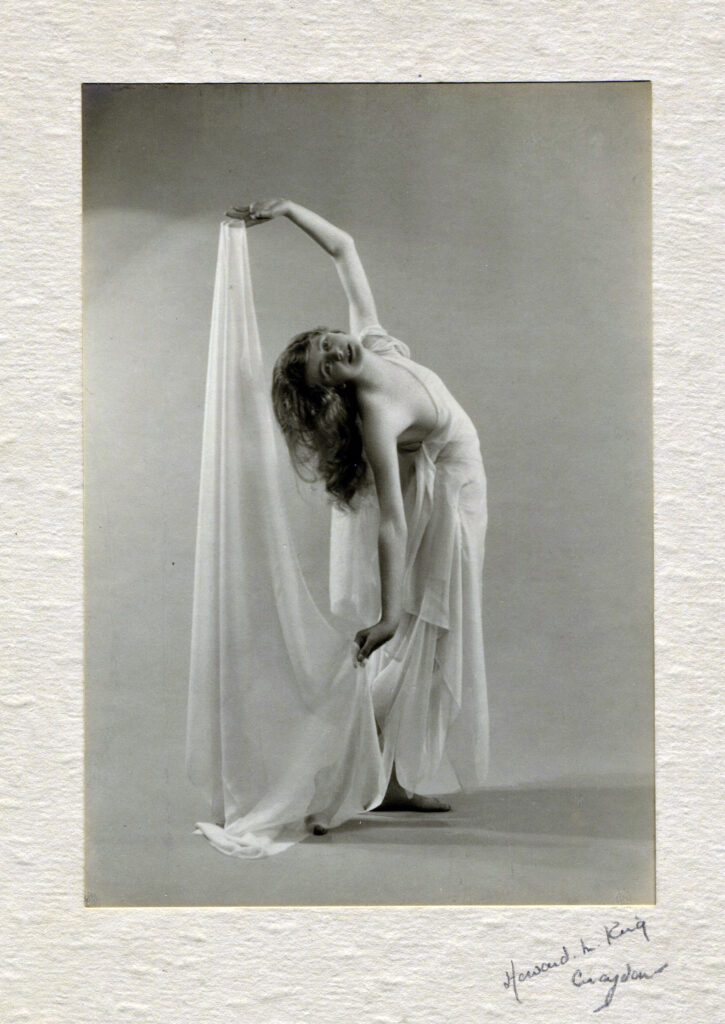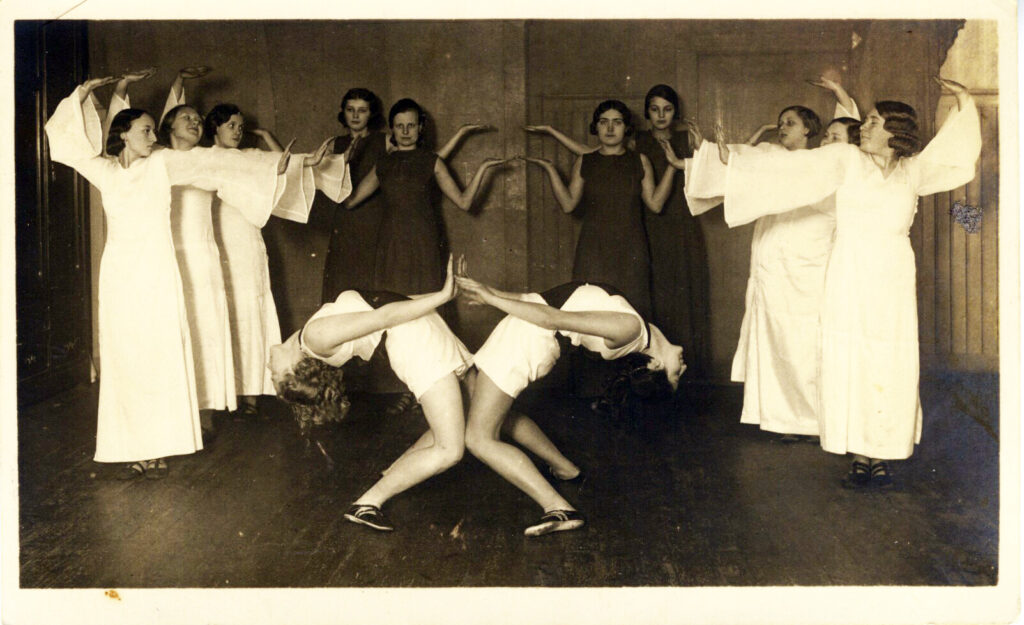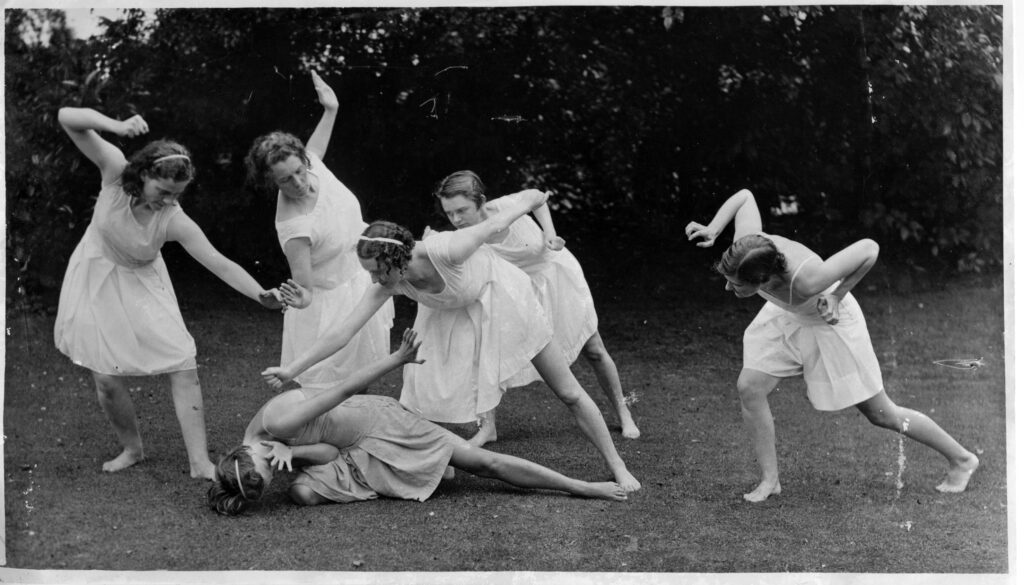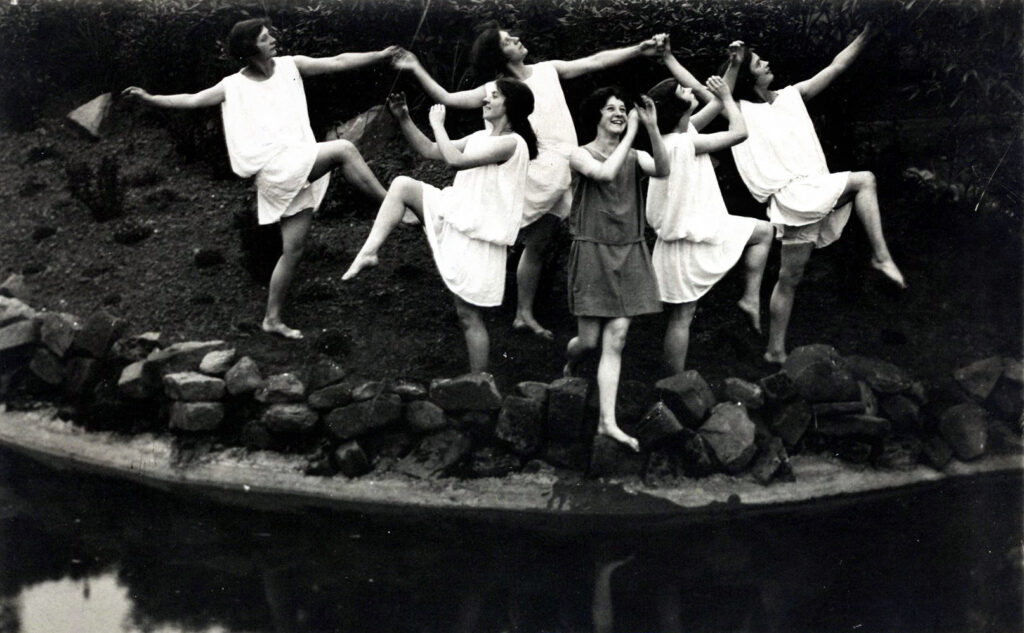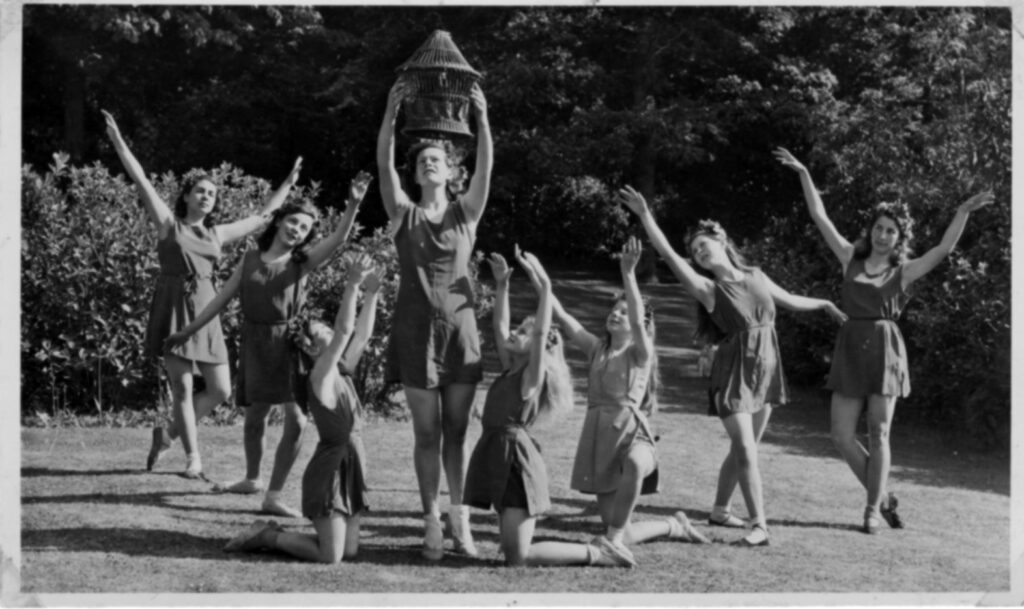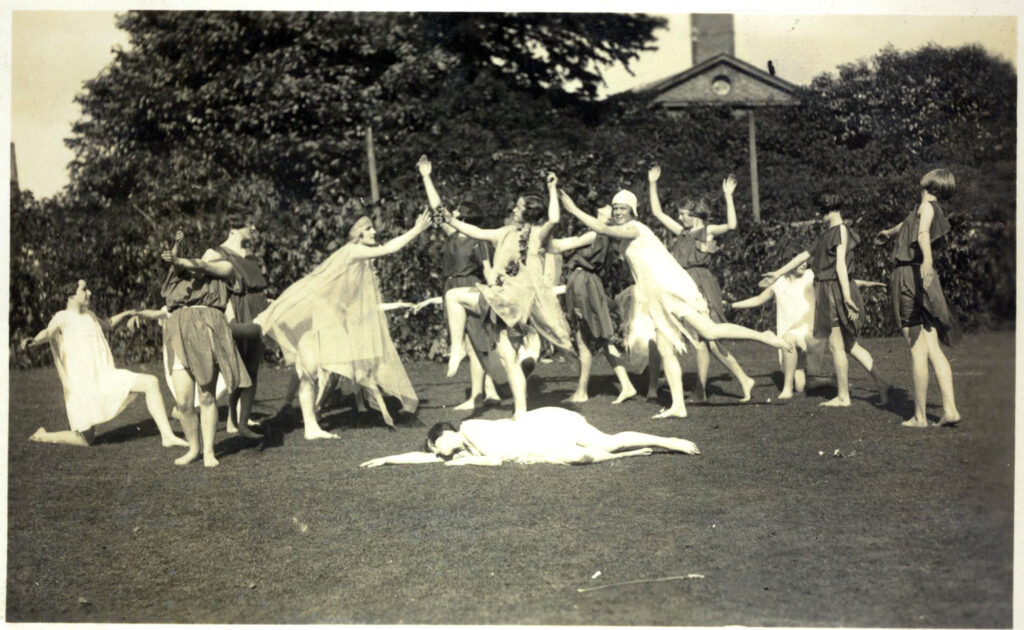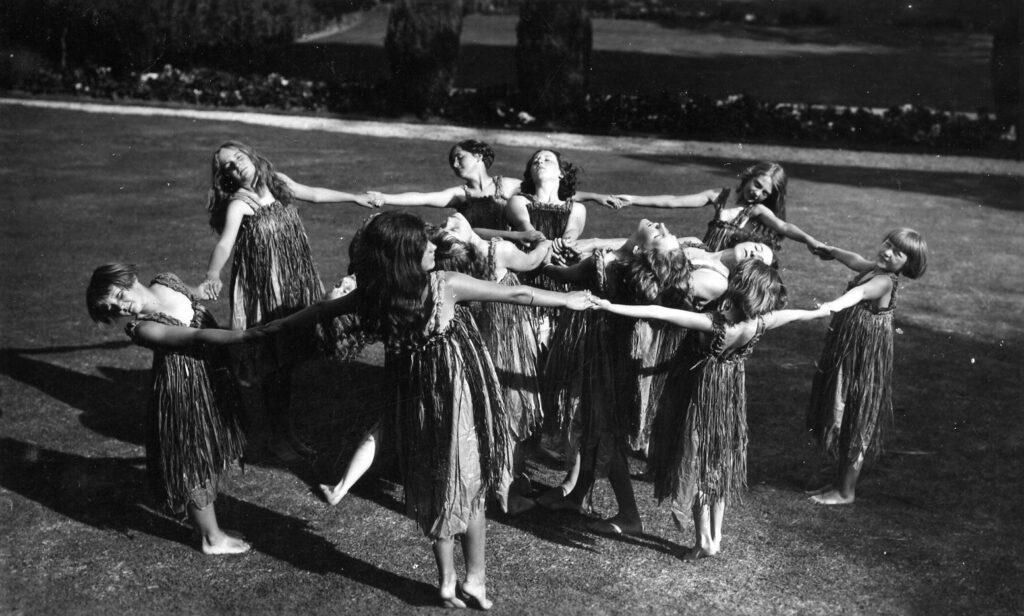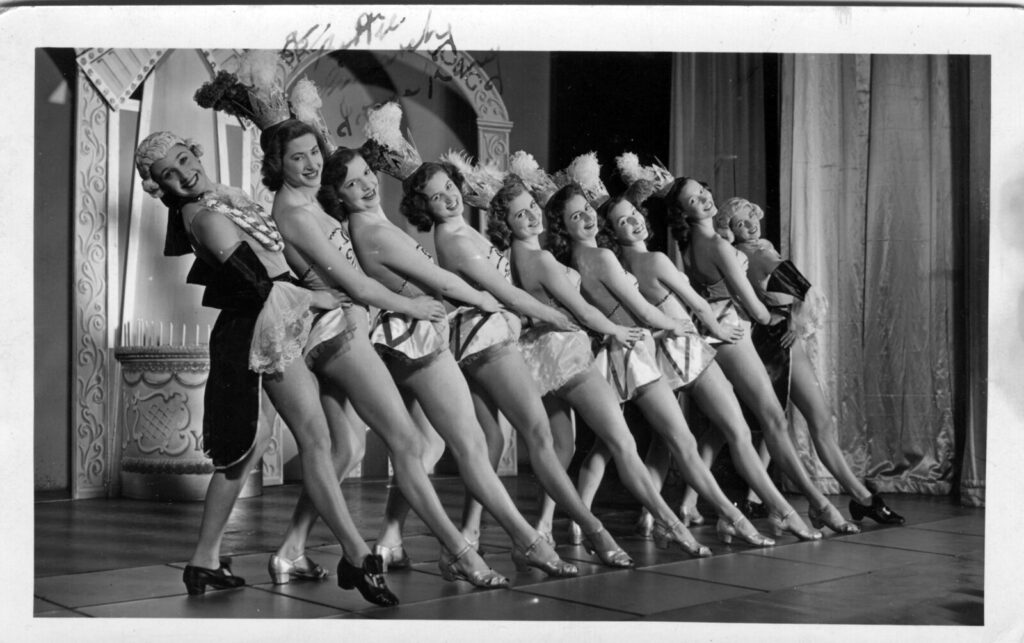
Most of the photographs of the Windmill Girls were taken by their house photographer and publicist Kenneth H Bandy. This is a typical shot of the dancers and they are all named on the reverse: Renee Baxter, Valerie Trevor, Rosalie Waltham, Irene King, Renny Calvert, Hope Calvert, Jeanne Weatherstone, Thelma Ward, Pauline Colgate. After I’d published this photo on my flickr feed I was contacted by someone who told me Jeanne Weatherstone was his mum!

As you can see from this inside cover of the Revudeville annual publication the Windmill Girls performed multiple times per day and they were required to learn new routines every five weeks. There were also two sets of dancers; troupes 1 and 2.
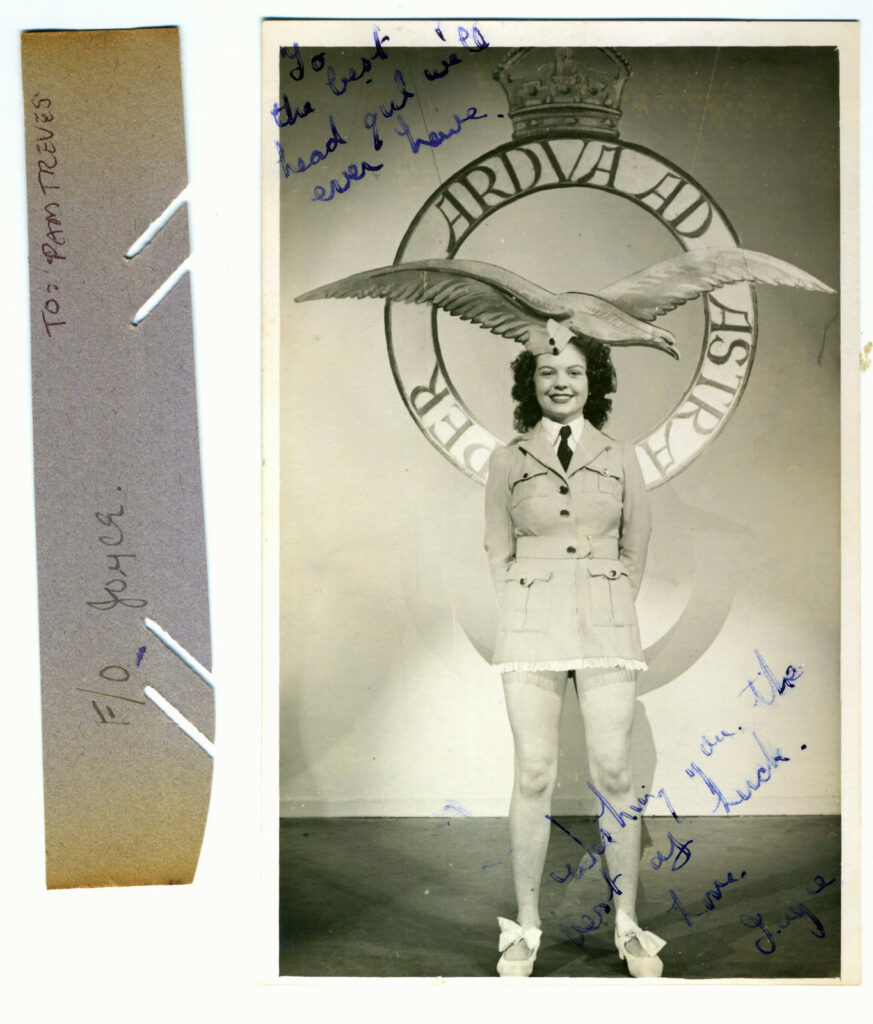
The leader of the dancers was known as the Head Girl (not just at the Windmill but also for other troupes). This card is an interesting puzzle. Who was the “head girl” that this card was dedicated to? In the book “Remembering Revudeville” by Jill Millard Shapiro there’s a section written by Vivien Goldsmith about her mother Joan Jay. During the war the performers often slept overnight in the Windmill Theatre as it wasn’t safe to venture out during bombing raids. Goldsmith said it resembled a boarding school in some ways and that her mother Joan Jay “referred to herself as its head girl.” Joan Jay left the Windmill after 11 years to get married and I’m guessing the card dates from that time.
So who sent the card? The signature looks as though it’s Joy or Joyce. I can’t find a reference to a Joyce at the Windmill but there were four Joys. Comparing the card to photos in the Revudeville book I’d say it’s Joy Hunt but again I can’t be sure.
(The oddly shaped piece of card was on the back of the photo and doesn’t help. It definitely looks like “F/O Joyce” and then there’s “To: Pam Treves” who isn’t listed in the Revudeville book.)
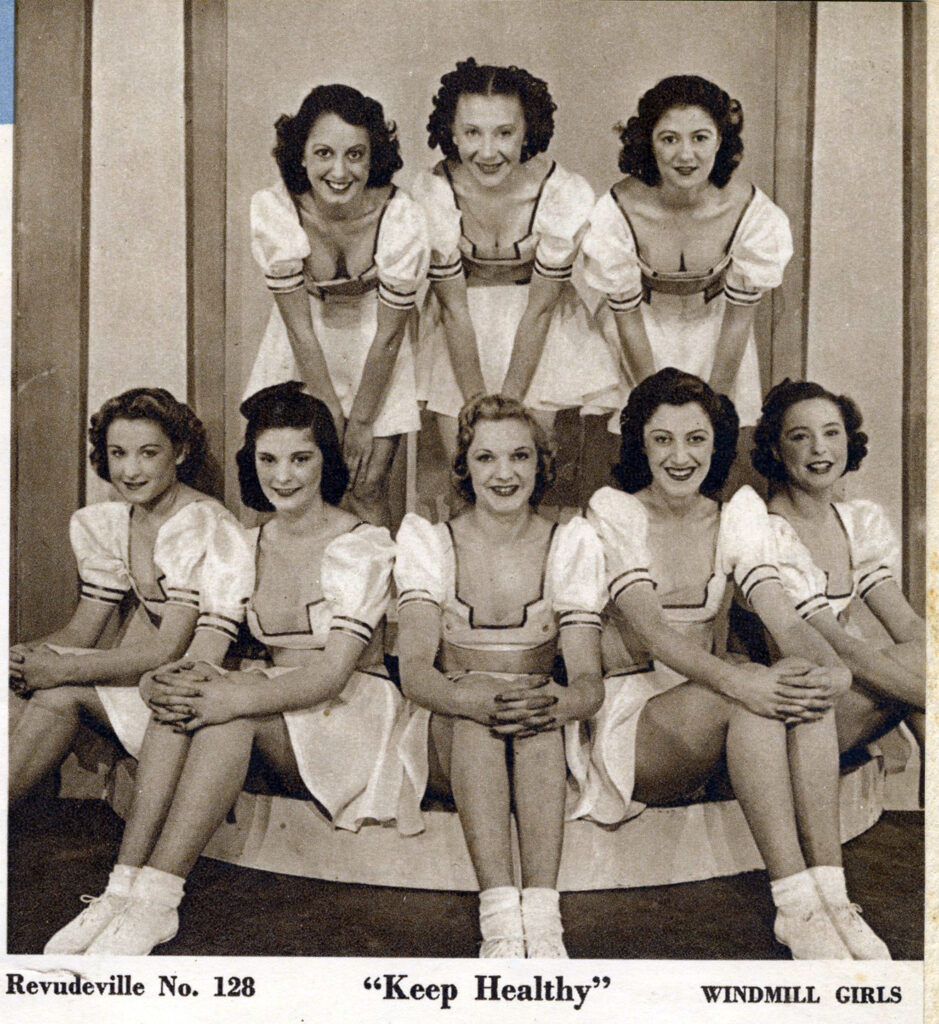
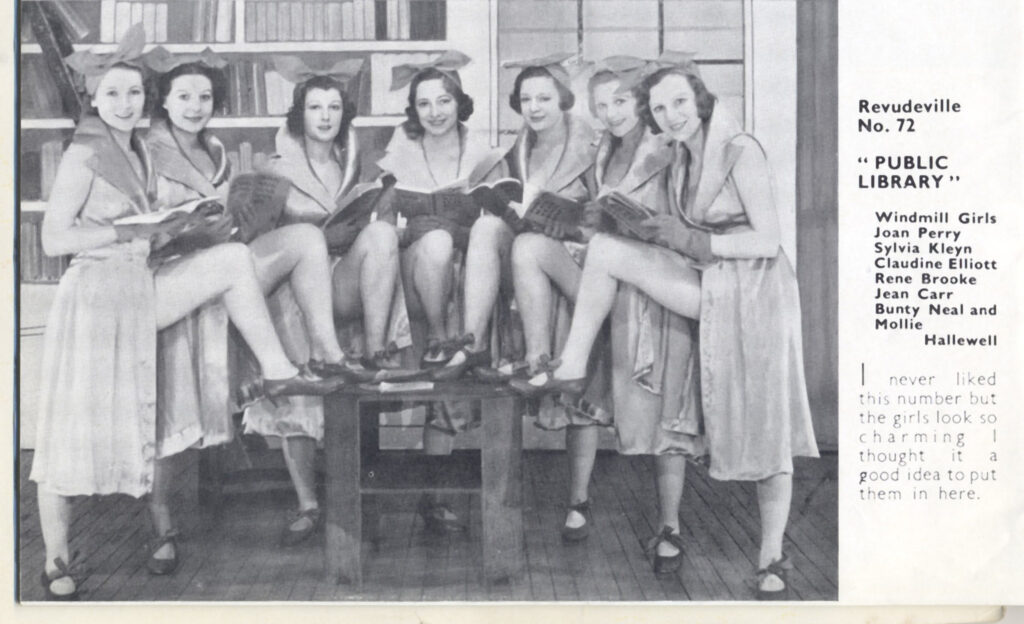
All of the routines performed by the dancers were given spurious names to justify them.
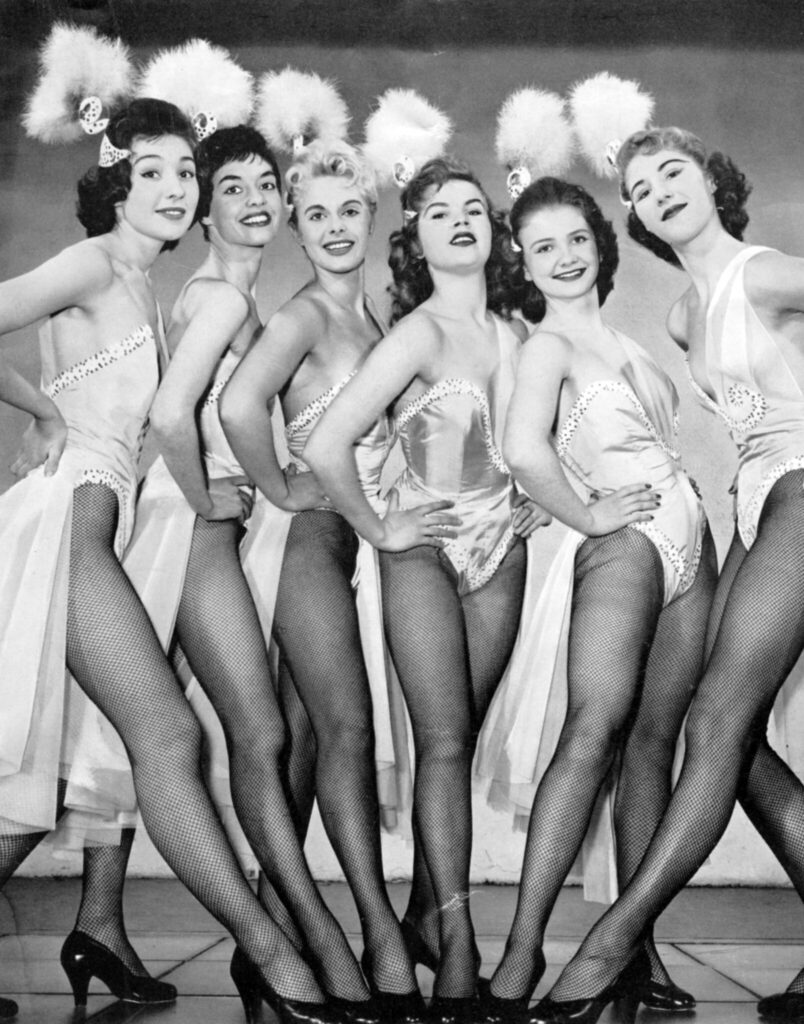
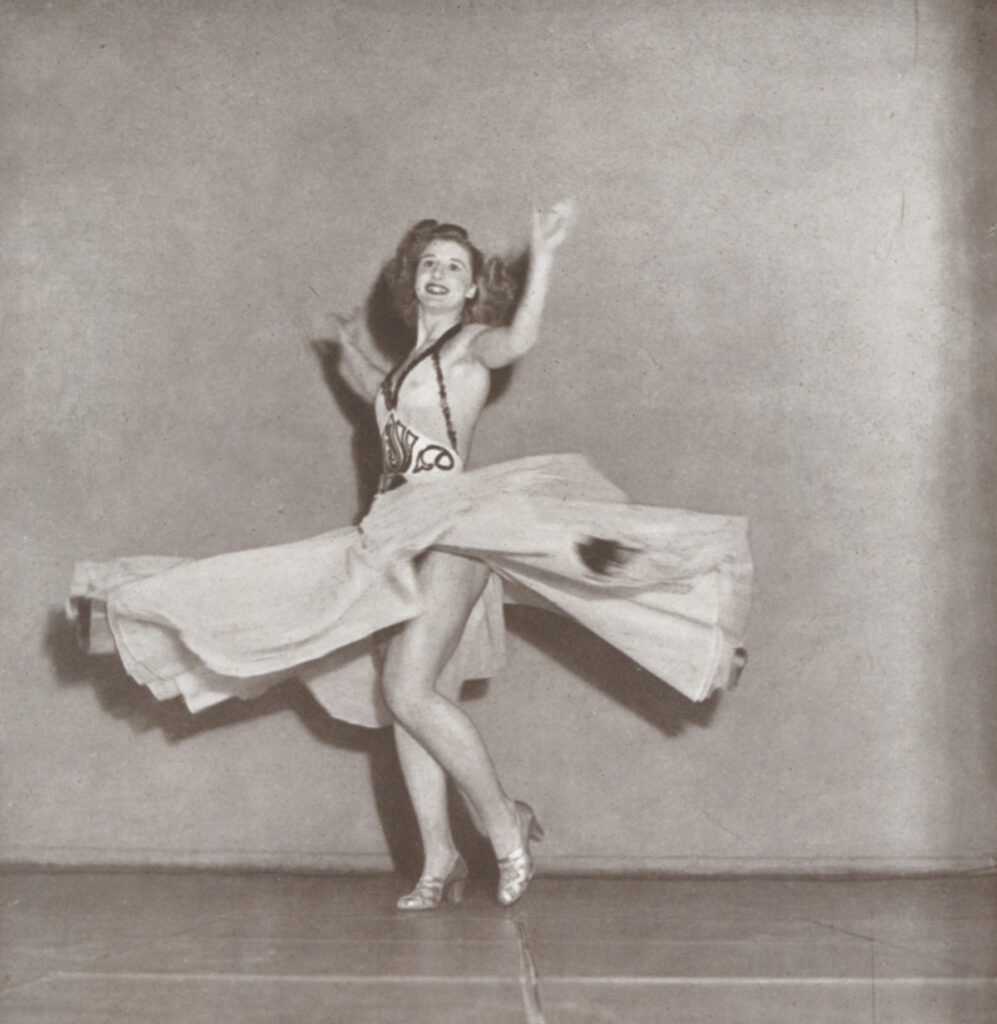
The dancers performed both in groups and as solo dancers, such as Anita D’Ray shown above. The dancers also included males though I’ve not shown any here as the theme is “vintage dancing girls.”
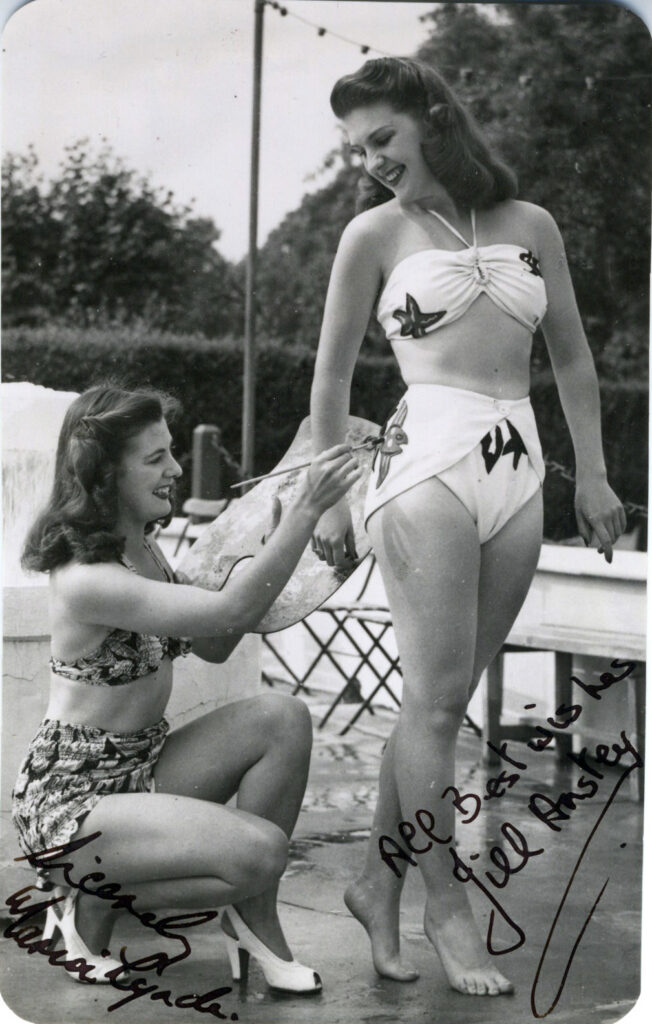
At first glance it isn’t clear this photo should be classified as “vintage dancing girls.” However the models are named as Jill Antsey and Marion Lynde and a search reveals they were Windmill Girls in the 1940s so they would have danced as well as appearing in nude tableaux. This article www.arthurlloyd.co.uk/Archive/Feb2003/SpeedwayArticle/Spe… from 1948 gives more information. There’s mention of “Beryl Catlin and Marion Lynde rehearse a Spanish dance.” As for Jill Antsey you can read “A Lead in the current search for new British talent will be given by Daniel Angel Films in their musical-thriller “Murder at the Windmill.” More than a dozen youngsters who have never before been in front of a movie camera will be given a chance supporting Garry Marsh, Jack Livesey, Elliot Makeham, Jon Pertwee, Jimmy Edwards and Diana Decker. For instance, one of the juvenile leads will be played by Windmill girl Jill Anstey.”
The film “Murder at the Windmill” is listed on imdb and has been recently shown on Talking Pictures TV. (It’s not a great film but it gives you an idea of how small the theatre was).
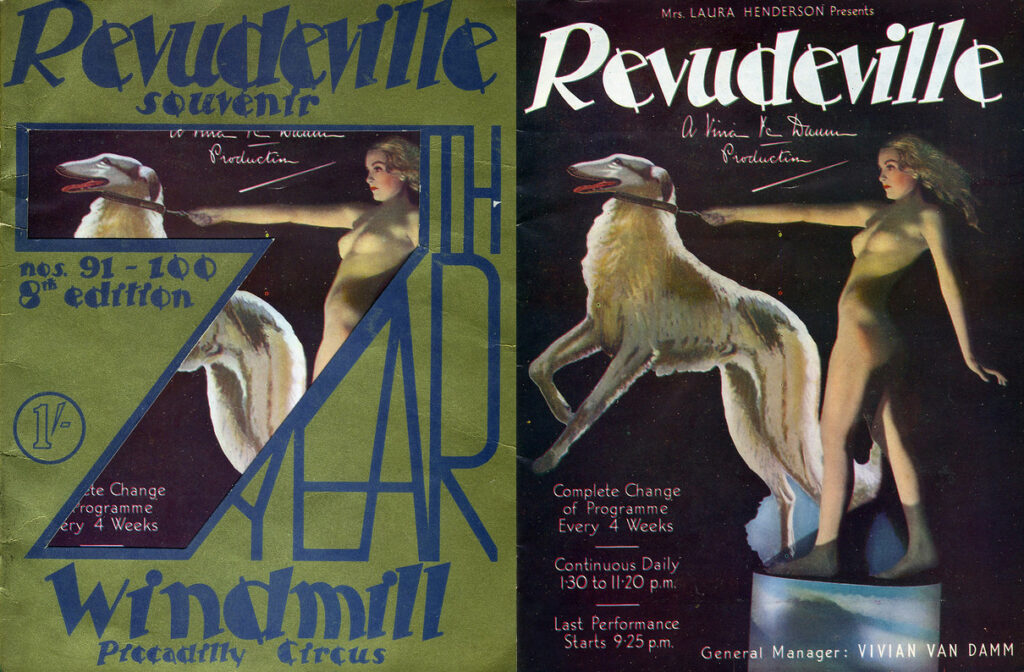
A souvenir issue of the Revudeville programme was issued yearly and often featured gimmicks such as this one. The large seven being a cut-out leading to the fuller picture inside. You can find copies of the various editions on ebay for a few pounds each though some editions are harder to find than others.
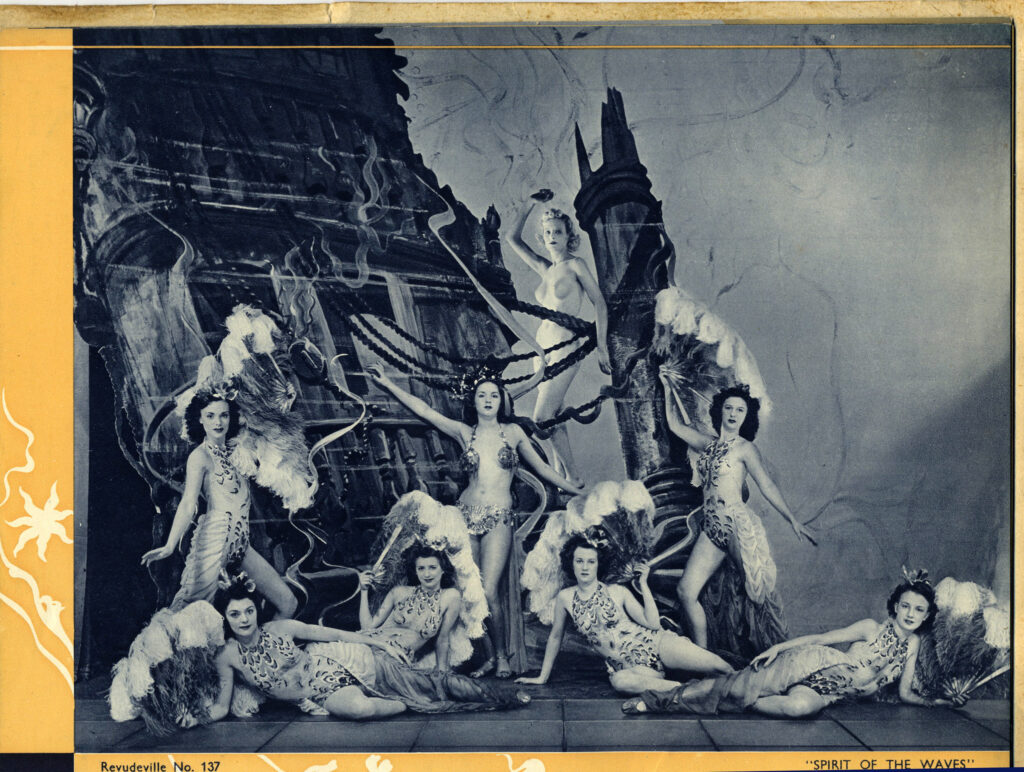
Of course the Windmill Theatre was also famous for its nude tableaux and the dancers were also required to appear in these scenes. A clever loophole meant that nudity could be featured on stage so long as the girls did not move! You can see more examples of the tableaux, the photos by Kenneth Bandy and many more Windmill related ephemera at my flickr feed.
